
For the year ended 31 December






For the year ended 31 December




Since early 2020, the world has faced a time of change, with a wealth of challenges on both a humanitarian and a business level. 2023 has proved no different. For marine insurers the complex landscape presented geopolitical tensions, environmental regulations, advancing technology, and intricate supply chain dynamics, alongside evolving policy and regulatory frameworks. These offered both opportunities and challenges. Competition and industry consolidations reshaped the sector, ushering in new players and altering dynamics within the field.
In 2023, The Swedish Club’s primary focus was to ensure that it was prepared to face a future described by many as the most complex and uncertain in their lifetimes. This involved strengthening the management team and a focus on the regions. The Club also looked to enhancing in-depth expertise across the organisation, through developing employees’ proficiency in technical, digital, environmental, regulatory, and legal knowledge.
These initiatives ensured that the Club possesses the requisite skills and resources to swiftly act in members’ interests and navigate the complexity and sophistication of future shipping operations.

Insurance including Charterers' Liability, 20 February 2024
Insurance, 20 February 2024
H&M Insurance including OSVs, 1 January 2024


Appointed as Chairman at the 2023 AGM, Peter Claesson spent the first six months of 2023 becoming accustomed to his new role, interacting with members and staff, and working closely with Managing Director Thomas Nordberg to refine an overarching strategy for the Club. As well as some key personnel changes, 2023 was a time for setting short, medium, and longterm goals, he says.
“From my point of view, 2023 saw a lot of energy in the Club, a reinvigorated feeling, and even more flexibility in dealing with members. We are focusing on new ways of working and new expectations; we need to fully utilise the potential of our staff.”
When asked about the markets in 2023, Peter says: “All shipowners know that there will be volatility in the market –you endure it when it happens, and then obviously it is good when the market turns.” Overall, there has been a broadly positive tone in the shipping markets for the past couple of years. “After Covid-19 we saw a tremendous rebound, although of course the story varies in the different segments,” he adds.
“For example,” he says, “the tanker business remains a strong market, for two reasons. First, there are the increased tonnemiles as a result of the sanctions against Russia. Second, there is the low order book.”
Neither of these factors seem set to change in 2024, he says – but the order book has started to fill up for 2025 deliveries.
Shipping continues to face the risks and dangers of attacks in the Red Sea and Black Sea. Peter says: “For reputable shipowners, the priority is obviously the safety and security of our seafarers and our vessels. That is paramount in every decision that we make; after meticulous evaluation, shipowners must decide whether they will let their vessel sail into these waters.”
As well as the impact on transits through the Suez Canal, the lack of water in the Panama Canal is adding to global disruption, he notes.
“If there is a flip side, generally disruptions and geopolitical uncertainty tend to raise day rates and increase prices for charterers, shipowners and cargo owners – it is compensation for the upheaval.”
The Swedish Club is doing its utmost to assist members with the commercial and legal challenges arising from the geopolitical turmoil, says Peter. “The Club has been very responsive and proactive, providing general and local guidance where applicable. On the question of sanctions, we have a strong asset in Malin Högberg, our Director of Corporate Legal, who is extremely knowledgeable in this area and also in a unique position chairing the IG Sanctions Committee.”
As well as a keen focus on potential risks, a vital ingredient in the selection of members today is KYC (Know Your Client) procedures, he adds. “How is the shipowner conducting himself in financial, ethical, safety and security aspects? Is quality going up?”
The ‘art of the possible’
Decarbonisation of shipping is moving ahead – the direction is clear, says Peter. “I would argue that it is primarily Europe that has a fully implemented and thought-out strategy for dealing with decarbonisation, while in the rest of the world there is a patchwork of different regulations, most not as stringent as in Europe.
“Possibly the rhetoric may be a little bit ahead of the ‘art of the possible’ – in the real world, there is no magic wand to wave, and shipping is an especially hard-to-abate industry – but I think that the direction is clear, and you must have a strategy to cope with the various regulations.”
Shipowners are already having to comply with the EU Emissions Trading System (ETS), he points out. “You will pay a penalty if you don’t reduce your carbon intensity. I think everyone agrees that the cost of ETS compliance will be borne by the intermediate or end customer. The total effect could be that demand is dampened a little – we will wait to see what happens.”
The Club’s role in the decarbonisation of shipping is in its expertise evaluating and providing insurance cover for various risks, says Peter.
“This will be very competently handled by our specialists. The various shipping segments will choose different solutions – there is a market full of ideas and a portfolio of different solutions to solve the same problems. Perhaps one solution will eventually turn out to be superior and become the market-leading solution, but my view is that we will see different solutions according to need.”
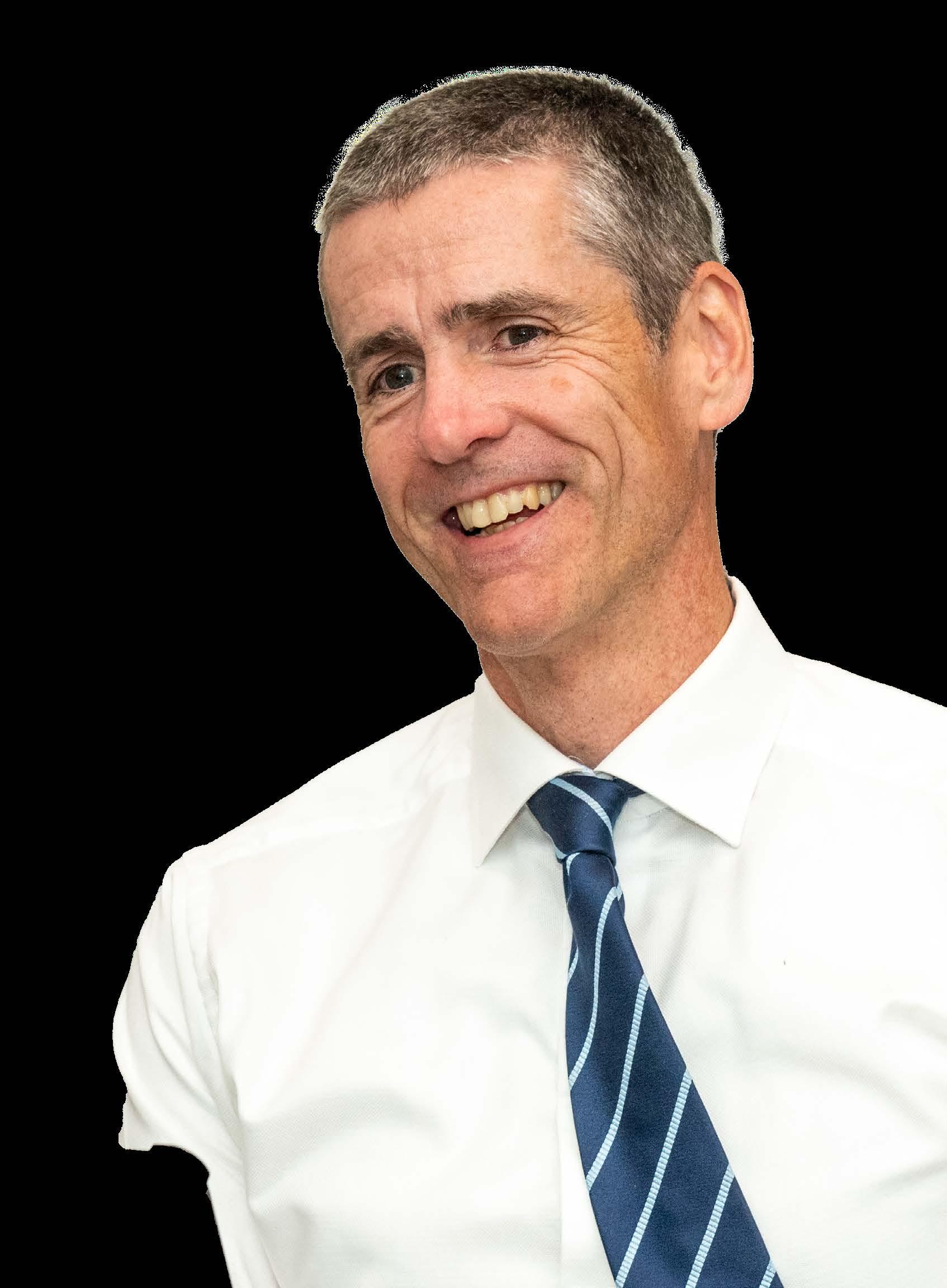
And of course, there are the wild cards. “The Russia-Ukraine war is having a negative impact on the drive to reduce emissions,” says Peter. “Instead of exporting Russian oil into Europe, it is being moved greater distances. Tonne-miles are now up and obviously CO2 emissions will be increased.”
Regaining S&P’s A-rating underpins the Club’s strategy as it moves into 2024 and Peter says: “There is no magic in this. It comes down to having a sustainable underwriting business – the combined ratio should be less than 100% – and good
investment returns, which are being helped by rising interest rates. If we can consistently deliver a balanced underwriting result and achieve between 4% and 6% investment return, then I believe we will be at our desired A-rating.”
The board’s focus for 2024 will be a continuation of what was started in 2023, he concludes. “We will focus on our client selection process, classing our risks early, look at every process. The changes in the organisation have created a lot of energy and we are determined to harness that energy.”

Peter Claesson Chairman
Stena AB
Gothenburg, Sweden

Michael Bodouroglou
Allseas Marine S.A. Voula, Greece

Ragnar Johansson
Wallenius SOL AB Gothenburg, Sweden

Thomas Nordberg Managing Director Gothenburg, Sweden

Chen Xiaoxiong COSCO Shipping Bulk Co. Ltd. Shanghai, PRC
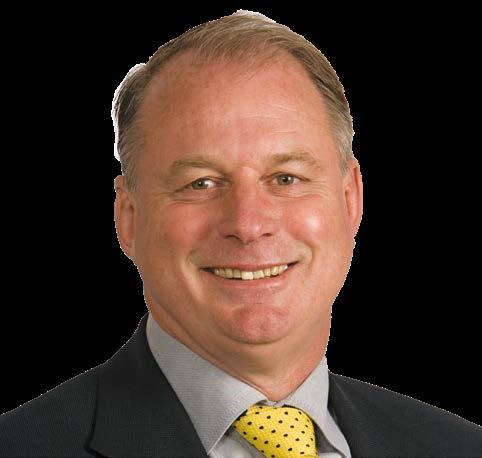
Lars Höglund
Furetank Rederi AB Donsö, Sweden
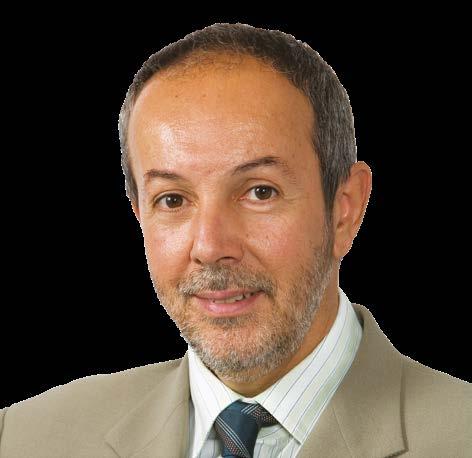
John Coustas Deputy Chairman
Danaos Shipping Co. Ltd. Piraeus, Greece
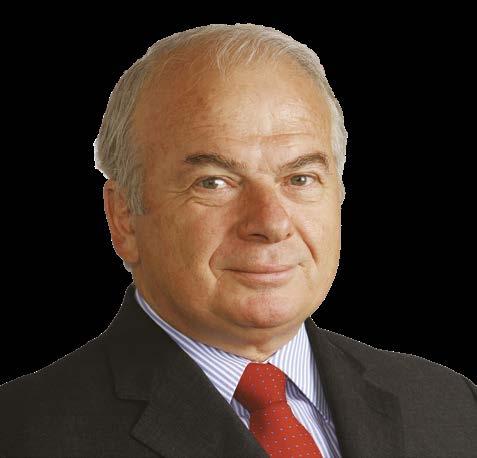
Demetri Dragazis Latsco (London) Ltd. London, United Kingdom

Anders Källsson
Erik Thun AB Lidköping, Sweden

Khalid Hashim Deputy Chairman
Precious Shipping Public Co. Ltd. Bangkok, Thailand

Andrew Hampson Tufton Investment Management Limited London, United Kingdom

Andonis Lemos Enesel S.A. Athens, Greece




Singapore
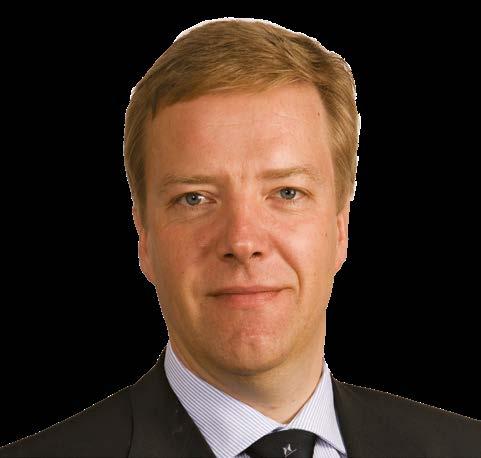


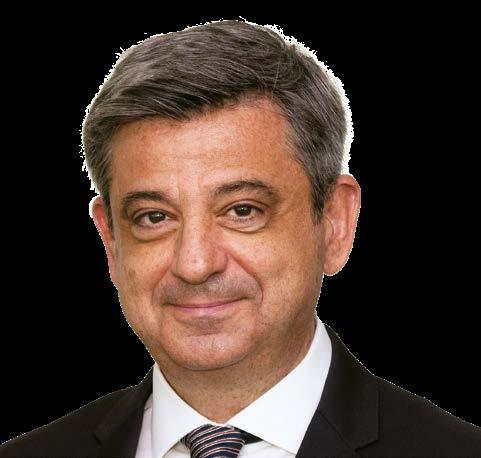
F.A. Vinnen & Co GmbH & Co. KG
Bremen, Germany
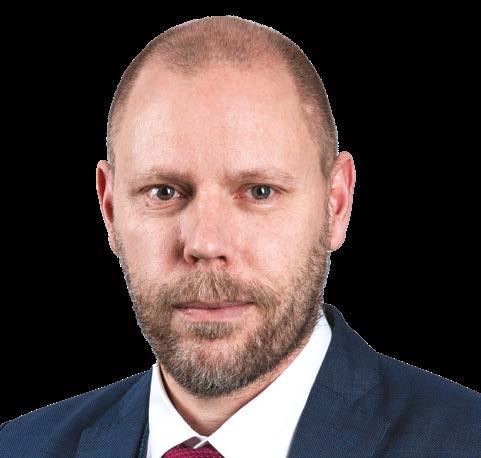
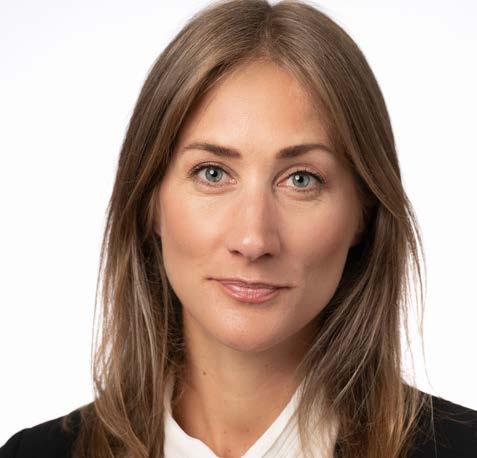


“When formulating a strategy for the future, you must reflect on your current position and evaluate what needs to be done,” says Thomas Nordberg, commenting on his first year as Managing Director of The Swedish Club. “That way you can ensure that you are in the best position to move forward.
“The emphasis in 2023 has been on change management, focusing on our organisation and our people. Whatever goals we set ourselves, unless we have the right organisation and processes in place, we will never achieve them,” he says.
A significant contribution to this aim was moving some of the Club’s most experienced people to regional posts, including Lars A. Malm to head up Team Hong Kong and Tord Nilsson to lead the expanded Team UK.
“We have to make sure we have the best possible people in the important regional offices,” says Thomas. “Alongside this, in 2023 there was a clear focus on operational performance and excellence. It’s about what needs to be done to achieve the best possible results from our insurance and investment portfolios, making sure we immediately address any negatives we can see emerging and acting quickly if we see anything we don’t think is right.”
After some challenging years due to Covid-19, global political tensions and tough economic and investment conditions, the Club ended 2023 with sound results.
“We finished with a 102% combined ratio and USD 34 million investment gain, which combined to deliver an overall USD 30 million profit – a performance with which we are quietly pleased,” says Thomas. “This result moves us in the right direction, which brings positive energy to the Club. Personally, I am very encouraged by what we have seen, and believe we have achieved the good results that the team’s focus and determination deserve.
“Our recovery plan for regaining our A-rating with S&P is in progress. Thanks to the solid 2023 annual result, we are already on the way.”
P&I achieved a combined ratio below 100%, performing better than Marine. FD&D was the best performing class.
In 2023 the Club has had to deal with negative runoff on some older cases going back as far as 2017-2018, notes Thomas. “However, overall 2023 has been much more positive, and we always focus on setting accurate reserves for claims,” he says.
In terms of membership, the Club continues to grow in targeted geographical areas, including Asia and the Greek market. More than 50% of the Club’s portfolio is now in Asia, reflecting the region’s increasing importance at the centre of global shipping. “Asia remains one of the most strategically important business hubs in global shipping. We are pleased to see that our long-term dedication to the region has continued to strengthen our presence in the area,” says Thomas.
In its commitment to growing quality business, the Club will also make efforts to further diversify its portfolio across vessel segments. “We have lots of exposure in the bulker and container segments and would like to see further growth in other selected key vessel segments to further improve the portfolio risk profile,” he adds.
Quality is key when it comes to new and existing risks. Thomas believes that assessing risk is all about having internal competence combined with access to the right tools. “Most of our underwriters have been with the Club for many years and they have an excellent overall understanding of the mechanisms and the risks involved,” he says. “We must ensure that we always have the underlying data and information required to properly evaluate the risks. It will be essential for future purposes that our portfolio is being
In 2023 there was a clear focus on operational performance and excellence
built upon best practice risk selection criteria.
Supporting members
“The strategy of the Club has always been to perform well in all aspects of its operations in relation to the membership, and the Club is known for its excellent claims services,” says Thomas. “As a smaller Club we strive to be more accessible, and family oriented towards our members.
“We stay close to the market and benefit from having close relationships with the decision makers in the different companies we work with. It’s all about trust based upon providing best practice services and products.”
and sanctions
In geopolitical matters, sanctions have dominated business decisions for the past two years. “We have been investing in additional resources during the past year to ensure we have the required capacity to handle the growing workload and tasks associated with sanctions. It is vital for the Club to ensure we are fully compliant with sanctions and the consequences for any failures in this respect can be very serious,” stresses Thomas.

Members must take their own business decisions, and the Club must be clear on its approach to that. “Sometimes we can’t support a member – but we can explain to them what they are allowed to do in compliance of sanctions. It is the same approach across the International Group (IG). The 12 IG Clubs are well aligned and coordinated in this respect,” he says.
The International Group
Sanctions and dealing with geopolitics have, in recent years, become an increasingly important area for the IG, Thomas notes. “The IG Sanctions Committee chaired by our Legal Director, Malin Högberg, is currently one of the most exposed and relevant Committees in the IG Committee system. It is also an advantage for us as a Club and our members to have one of our people in this key position” he says.

The committee structure and work of the IG is important for the Clubs, serving as an efficient tool to share knowledge and experience across the cross section of claims and other operational key areas.
“We all support and recognise the value and importance of maintaining an effective Group and a solid P&I club network,” says Thomas. “A close and well-coordinated cooperation between the Clubs is perhaps more important than ever when considering the uncertain times in which we operate.”
Of the new products introduced by the Club in 2023, the most important was Cyber Insurance cover. “This has been very well received by brokers and members, who are continuing to sign up to it,” he says. “We are providing a product that clearly meets our clients’ requirements. This demonstrates that we are responding fast to market demands with a strong focus on our member’s needs – it is all about being agile and proactive. In addition, our new product for small craft has also been well received.”
Of the new products introduced by the Club in 2023 the most important was Cyber Insurance cover
We will continue to embrace change wherever necessary,” says Thomas Nordberg. “We anticipate more organisational changes and refinement of processes, and a stronger focus on our regional offices.”
Redefining quality
Regaining a ‘solid, firm A-rating’ with S&P is a crucial corporate objective, he says. “We are fully focused on what is required to achieve this. Our recovery plan has very specific goals.”
These goals are based upon specified targets both on the insurance side as well as in respect of the Club’s investment activities.

“This is primarily a simple model to quantify what we need to do in terms of results during the next few years,” Thomas says. “To deliver on these ambitions, revised strategic action plans will be followed to ensure best possible outcome in our core activity areas.”
In this context, the quality of the Club’s portfolio will be key. “We are constantly looking for ways to determine and define the best possible quality of our portfolio,” he explains. “This work will impact on how we relate to existing business as well as how we will expand our portfolio going forward. Redefining risk and quality, as and when required, is a crucially important task for us as underwriters.”
Thomas states that The Swedish Club is paying close attention to the challenges and opportunities triggered by the decarbonisation of shipping. In practice, this means ensuring that the Club can provide essential support to its members and the wider industry.
“It is important for us to have the relevant cover in place in relation to the new fuels and technologies being developed and introduced,” he says. This will be crucial for the Club’s members who have invested in these technologies.
It is important for us to have the relevant cover in place in relation to the new fuels and technologies being developed and introduced
“We are closely following what the owner community is doing. We are seeing a lot of investment in new environmentally healthy technologies and that is something we must prepare for. This involves having the right insurance products required by this technology and the internal competencies to properly assess the risks and to provide best practice claims services and advice. And this is also an opportunity for us as a Club to contribute towards the established greenhouse gas (GHG) net zero targets together with our members.”



Managing Director
Thomas Nordberg

Director, IT and Digital Transformation
Magnus Axelsson

Director, Claims
Johan Kahlmeter
The
emphasis in 2023 has been on change management, focusing on our organisation and our people
Thomas Nordberg

Director, Underwriting
Thorbjörn Emanuelsson

Director, Finance & Risk Management
Mikael Kromli
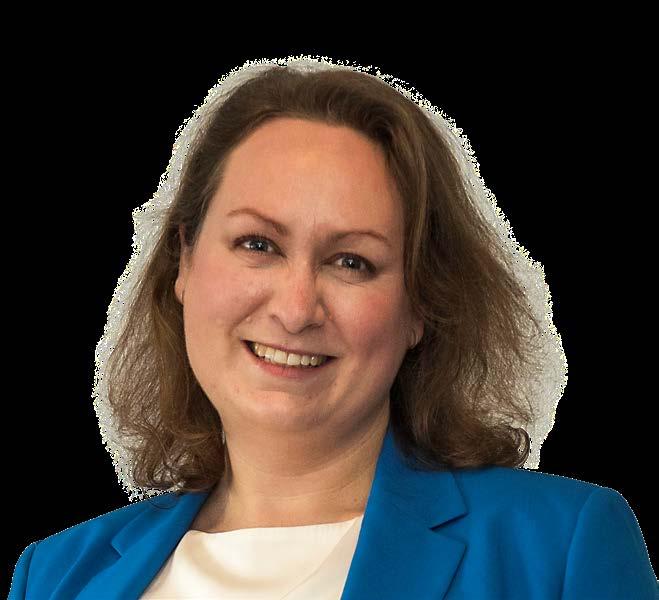
Director, Corporate Legal
Malin Högberg

Director, Human Resources
Britta Patriksson
The Swedish Club finished 2023 with underwriting in line with plan and investment returns exceeding expectations.
“I am pleased with that performance,” says Mikael. “We followed through on our intentions, including being immensely focused on making the right choices of risks, and being diligent when it comes to claims handling and assessments.”
A 102% combined ratio together with USD 34 million of returns on investments delivered USD 30 million in profits for the Club. Including other comprehensive income, free reserves grew from USD 150 million to USD 184 million. “The financial position of the Club is very strong,” he adds.
All through 2023 the Club has maintained equities at the reduced share of 15% of the investment portfolio that was introduced in 2022. Hence, equities constitute 15% of the investments and interest-bearing assets represent 85%. “An important objective is to optimally balance risk and return while maintaining an appropriate liquidity profile,” says Mikael. ”To this end, we base our stance and decisions on long-term views and anchored investment beliefs paired with the cash flow needs and solvency requirements of our core operations, insurance.”
The Club continues its long-standing collaboration with investment experts Mercer. “No one can foresee the future with granular precision, but structured analysis supports quality-assured investment strategy discussions and decisions,” he says.
One important aspect of The Swedish Club’s attraction in the market is the ability to provide predictability. “Here’s where world-class loss prevention advice, insurance cover, response and sustainable financial viability come into play,” says Mikael. “Whatever we do with financial implications has to deliver value to our members.”

During 2023, the Club further improved its ability to optimise reinsurance cover by extensive analytical modelling. “Our actuary contributed greatly to enhance our model to enable improved statistical analysis,” says Mikael. “This has translated into more cost efficient and effective covers for the Club and improved and less volatile bottom line results, which has greatly benefitted our members.”
We followed through on our intentions, including being immensely focused on making the right choices of risks, and being diligent when it comes to claims handling and assessments
The Club’s A- rating with AM Best demonstrates its fundamental financial strength, competitive position and quality processes. With Standard & Poor’s, the rating is currently BBB+. The Club aims to hold A ratings with both rating institutes. Therefore, the financial and operational targets of the Club are geared to regain Standard & Poor’s A rating. “These are objectives that harmonise with the mutual interests of our members. In financial terms, a combined ratio below 100% and expected returns of our current investment portfolio composition will build the capital base to enable an A rating with S&P,” says Mikael.
Important drivers to achieve and maintain combined ratios below 100% include pricing adequacy across all segments, cost efficient operations throughout the value chain and prudent risk selection reflecting diligent sanctions compliance and sustainability perspectives. ”This strengthens our mutuality, by building on a group of value-sharing members.”
One of The Swedish Club’s key strengths is its decentralised model, with strong local offices and expert teams working close to the members, says Thorbjörn Emanuelsson. “We continue to capitalise on our local presence. However, while aiming to work more efficiently as one organisation, at the same time we seek to find a balance and ensure that being decentralised does not mean being disconnected.”
There is a focus to ‘work smarter’ across the Club, he says. “In 2023 we continued to invest in our organisation to deliver even better results, deployed improved tools to further refine our risk assessment and enhanced the way in which we monitor and measure the market and follow up. These initiatives are ongoing - we need to be more efficient and sharper in all aspects of our business – everything is changing so rapidly.”
The Club’s underwriting philosophy is based on being ‘a direct mutual in everything we do’, says Thorbjörn. “It is about how we offer assistance, and it is about our long-term partnerships with those we work with.”
Having joined The Swedish Club in July 2023, and taken time to understand its underwriting processes and functions, Thorbjörn is now well placed to drive forward changes based on a clear understanding of the Club’s strengths.
“We have a comprehensive offering that doesn’t rely only on P&I,” he says. “We firmly believe in providing a full suite of insurance cover as a business model – indeed H&M is part of the Club’s heritage. We gain huge insights, knowledge, and experience from this approach. It’s a remarkable platform for the business.”
Quality underlines every aspect of the work carried out by the Club, says Thorbjörn. “From an underwriting perspective that means refining the member/vessel selection and insuring only those vessels that meet the Club’s quality parameters.”

The last few years have seen a period of upheaval, beginning with the situation in Ukraine, and followed by unforeseen conflict around the world. “For the insurance industry in 2023 the major challenges centred around the Black Sea and the Red Sea,” says Thorbjörn. “These have been all encompassing, totally changing the way marine insurers must now carry out many aspects of their business. Sanctions have become a way of life and the international nature of our business and the G7 nexus of most of the marine insurance industry has put marine insurers at the forefront of sanctions implementation.
“The Club’s war insurance book has been benign in terms of losses in 2023 but the exposure is changing rapidly and the likelihood of things changing is becoming much more real,” he adds. “With so many developments in terms of activity and risk, it is important to keep close to our members, and continue to anticipate and respond to their needs.”
As shipowners grapple with the decarbonisation agenda, they are today making decisions on alternative fuels that will have a key impact on their businesses in years to come. “The Club has a vital role to play in this transition, but this is not without its risks,” says Thorbjörn. “Our industry has for many years been based on detailed loss experience. There will be new technology on vessels, and we will not have the data to look back ten years and see what the experience has been with alternative fuels. We must be much more forward-leaning, make insurance available and facilitate the transition to new fuels.”
The launch of the Club’s new Cyber Insurance is an excellent example of identifying what is needed and moving rapidly, says Thorbjörn. “For us, it will never be a case of ‘why don’t we venture into this or that’ with a view to profit, but always to develop products with a view to the needs of our members.”
The sanctions landscape expanded rapidly in scope and complexity during 2023, and the focus for The Swedish Club’s legal team was to ensure that all regional offices had their own sanctions expertise, as well as being able to call on the legal department where additional support was needed.
“Most people in the industry found 2022 intense, with new sanctions coming out at a rapid pace, every two to three months,” says Malin. “The trend continued in 2023, and it became clear that the complexity of the sanctions regimes against Russia go way beyond anything industry has seen before. Thus, 2023 was focused on enabling the Club’s local teams to see sanctions as a permanent risk that we must deal with and have permanent resources in place for.”
The value of the mutual model is such that P&I insurance picks up the risks that few others are prepared to cover – but this will never stretch to anything unlawful, Malin emphasises. “When it comes to sanctions we cannot hope that a specific action ‘should probably be allowed’: we must be certain. It is a matter of unlawfulness and unlawful trade is not insurable.
“Originally many thought that sanctions against Russia would increase at such a pace that after a year no one would be going there,” says Malin. “However, we have seen major changes in trading patterns, with Russian oil being shipped to alternative destinations outside Europe.”
The Oil Price Cap (OPC) adds another layer of complexity. “On a normal voyage, oil can be traded 30 times while at sea. And yet the OPC obligation sits with the shipowner, which has no control over this trade.”
From December 2022, the Club was required to secure one attestation per member per year to demonstrate that they had carried out due diligence on the price of any Russian

oil or petroleum products being carried. “Now, we will need one attestation per voyage. If the trading levels of 2023 are maintained, that means a 30-fold increase in the number of attestations that the Club must collect in 2024. If the attestation is not provided within 30 days of loading the cargo, we are not allowed to provide cover.”
In chairing the International Group’s Sanctions Committee, Malin has worked closely with other IG Clubs as well as the authorities to understand and explain sanctions issues. “It has been a privilege to chair the committee,” she says. “and I have represented the IG Clubs in meeting with senior officials around the world. While policy is developed by the authorities, the IG Clubs are seen as a discussion partner providing valuable industry insight to ensure the sanctions packages are viable.
“Meanwhile, the European Union has been at the forefront of sanctions against Russia, so The Swedish Club has been affected before others. That means that we have sometimes had to be first in implementing the needful due diligence procedures to secure compliance with the EU sanctions regimes against Russia.”
The Club has concentrated on providing up-to-date information on sanctions packages for its members, via the sanctions site online, which also contains a comprehensive guide for members on carrying out due diligence.
In 2023 the Club expanded its legal team, to ensure readiness for the ever-increasing legislative environment that the shipping industry faces. By way of example, the Club’s UK branch has obtained its post-Brexit Part 4A authorisation and compliance with local laws and regulations needs to be ensured.
“It has been a yet another fairly benign year for claims across the industry, and we are pleased to say that The Swedish Club did not experience any pool claims in 2023,” says Johan Kahlmeter.
In 2023 the average cost of H&M claims for the Club remained at a similar level to 2021 and 2022. Frequencies have, however, been on a downward trend for a number of years and this has also been seen in 2023. “This is very positive news,” he says.
“For P&I, preliminary figures are telling us that the increases in average claims cost seen in recent years have remained at a similar level throughout 2023, but we have seen slightly fewer large claims than in the preceding two years.” he explains.
“The upward trend seen in frequencies for P&I in the past years has reversed and dropped in 2023. We hope this continues.”


When looking at the overall cost of claims for the Club we must remember that many of the really high-cost claims seen by the industry on the global stage are related to oil pollution and/or wreck removal, says Johan. “Elevated government demands and social expectations have a much greater impact on the cost of major claims than factors such as inflation.”
Geopolitical issues and sanctions are adding to the complexities of claims handling, and KYC (Know Your Client) procedures are becoming increasingly crucial, says Johan. “For every claim we handle, every security we issue, every payment we make, and every settlement we sign, we must make sure that we are always compliant, and this has required significant resources. The whole geopolitical situation has greatly affected our daily operations.”
“Fires on board vessels continue to be an area of concern,” says Johan. “They may be relatively rare, but the results can be very serious with loss of life and danger to the environment. For P&I clubs, vessel fires continue to have the highest average cost for all types of H&M claims.”
Vehicle fires have been much in the news in 2023. “Thankfully, we have not been exposed to any major fires involving electrical vehicles as of yet,” he says. “Generally, the majority of fire cases occur in machinery spaces whereas the rest have been in cargo holds and accommodation,” he adds.
Across the Club, service to members remains paramount, says Johan. “It doesn’t matter if our member calls at 4am on a Saturday – we want to help them with their problems and that is what we are trained to do. That goes through the whole organisation. Members feel that they are being taken care of by people who understand their needs and want to make the best out of the situation.
“Ultimately, being a swift, relevant, small organisation with a high level of service, wanting to help our members, is at the core of what we do.”
Loss prevention is a vital part of The Swedish Club’s strong brand. “We have been meticulous in gathering data over a long period of time – detailed information about where incidents occur, the reasons, what damage was caused, and how much it cost. We can then use this data to help our members to reduce or mitigate their claims and save lives at sea,” says Johan.
“Through analysis, we can find correlations, spot trends and identify problems, and we pass this information on to the membership promptly. We strongly believe we can help them to avoid incidents.
“Loss prevention has always been part of the Club’s DNA and central to the service we offer to members, he says. “We often receive positive feedback on our loss prevention support and the benefits our members gain from it. And our statistics show a tangible and positive impact from this work in reducing claims.”
TELP (Trade-Enabling Loss Prevention) is a good example of moving loss prevention from the generic to the personalised solution, specific to the vessel and its movements, Johan says. “Loss prevention must be both accessible and relevant to members’ operations. As such we stay close to the needs of the market and continue to add new features to TELP. In the last 12 months TELP has continued to prove popular with our members, with an ever-increasing number of fleets signing up to the programme.”
In 2023 the Club made the decision to extend its PreEmployment Medical Examination (PEME) service, offering medicals at clinics in five more top recruitment countries as well as expanding the current service in the Philippines. “The new enhanced PEME greatly increases the chances of identifying potential health issues that could lead to a crew member falling ill while on board,” Johan says. “Apart from the seafarer’s own wellbeing and safety which is key, it is easy to appreciate the risks imposed on colleagues, the operation of the vessel including commercial disruption, and the environment.”
The Club increased its outreach during the Covid-19 pandemic by organising frequent loss prevention webinars. Post-pandemic, the team continues to organise regular webinars – delivering valuable loss prevention and risk advice, and useful information. Webinars are now a permanent feature in the calendar and much welcomed by members, says Johan.
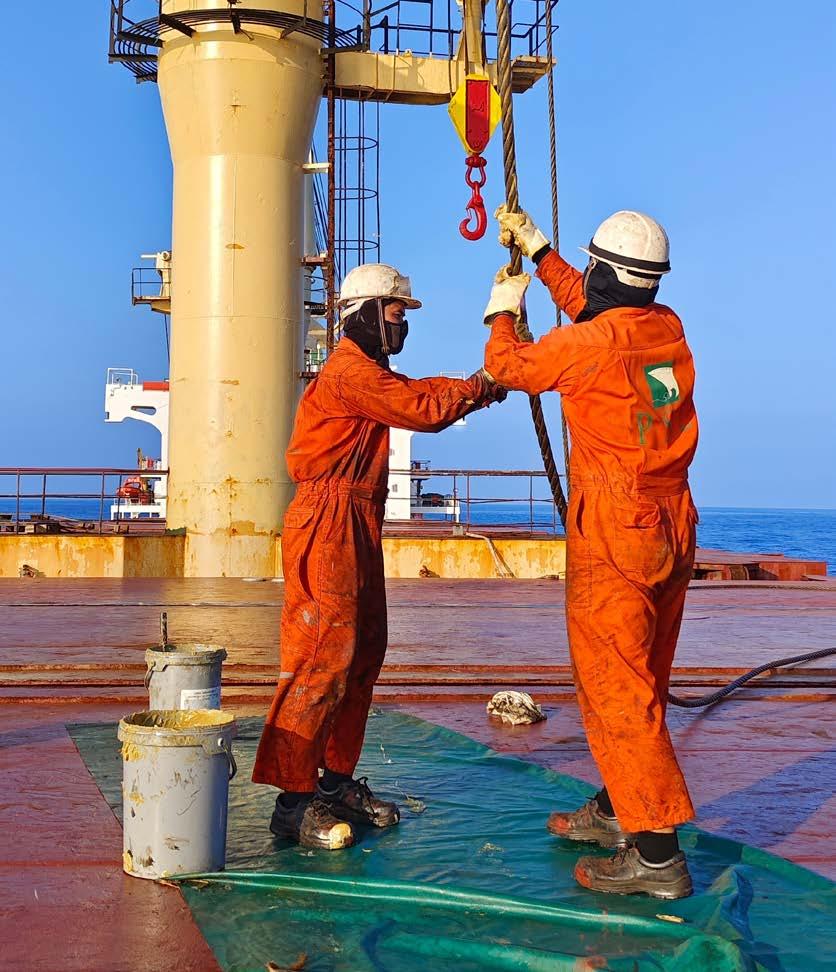
In 2023 the Club published the latest in its series of loss prevention publications: Bulker Focus - Carriage of grains and soya beans. This aimed at providing ship operators with an understanding of the common issues experienced during carriage of these cargoes, in addition to advising on ways to avoid them. This was the second initiative developed in partnership with cargo specialists, CWA in 2023, following on from the Club’s popular Cargo Advice, which continued to be published throughout the year.
Loss prevention is even more relevant in a troubled world
Johan says loss prevention is even more relevant in a troubled world. “To avoid risks and ensure safe operation there needs to be more focus on loss prevention. The current political landscape requires a lot more preparation – it is not just about ensuring compliance with sanctions. For example, no one wants their engine breaking down while transiting the Red Sea, so maintenance of that engine is even more important.”
In 2024 the Club has strengthened the Loss Prevention team, with the appointment of a new Loss Prevention Manager.
The creation of the new role of IT and Digital Transformation Director in 2023 is a prime example of the Club’s commitment to embracing change. “In all discussions our expertise is now at the table from the beginning,” says Magnus Axelsson. “This is already facilitating much faster time frames when taking ideas and process enhancements from concept to reality.”
“In preparing for the future you must consider foremost the people and the processes. It’s easy to focus too much on the technical aspects of IT. We are very much involved in the processes and systems, and we can often see the most streamlined and efficient way forward to a solution,” he says. “The most important thing that we as a function can do is to structure and harmonise the solutions we build with what is going to be most valuable for our members.”
2023 saw the continuing rollout of SAFIRE (System Administration For Insurance Risks Enterprise). As a project that was entirely developed in-house and started in 2021, SAFIRE enables the Club to respond even more quickly to members’ needs by giving the regional offices the ability to move rapidly in response to market developments. “With this new platform we are providing strong foundations for smart integration across the Club,” says Magnus.
The third of five SAFIRE modules was launched in 2022. The fourth module – covering insurance, underwriting, documentation and insurance management – will be launched in May 2024. The fifth and final module, will follow at the end of 2025. “We need to be very smart in the way we work with our members,” says Magnus. “It should be easy for brokers and members to work with us.”
Legal and compliance issues were a major focus area for the IT team, particularly in relation to the setting up of the new office in Singapore and stepping up the London office

to branch status. In the case of Singapore, this has included ensuring compliance with the new bookkeeping regulation IFRS 17.
Across the business, other IT projects have included a programme to support the underwriting process through business intelligence risk evaluation tools, and another to refine the business intelligence and data analysis around loss prevention.
“The best and most awarding part of my job is working with talented people who are solving difficult and challenging tasks and helping them build our teams and integrate our technology, in order to enhance and solve internal or external problems,” says Magnus.
AI will most certainly have a big impact on future developments, says Magnus. The Club has utilised machine learning for many years, for example on risk modelling and better pricing, and a number of new projects have begun to examine the use of AI.
Digital transformation plays a central role in enabling change, and 2023 has been vital in setting up the structures for this, he adds. “We have always been innovative within The Swedish Club. It is a mindset and culture and all about empowerment. We want people to come up with ideas and are keen to follow up on users’ suggestions and emphasise our openness to new ideas.
“We can always be better at integrating with our core business – and that is why we have brought in non-IT people from other departments to contribute and strengthen the IT team.”
In preparing for the future you must consider foremost the people and the processes
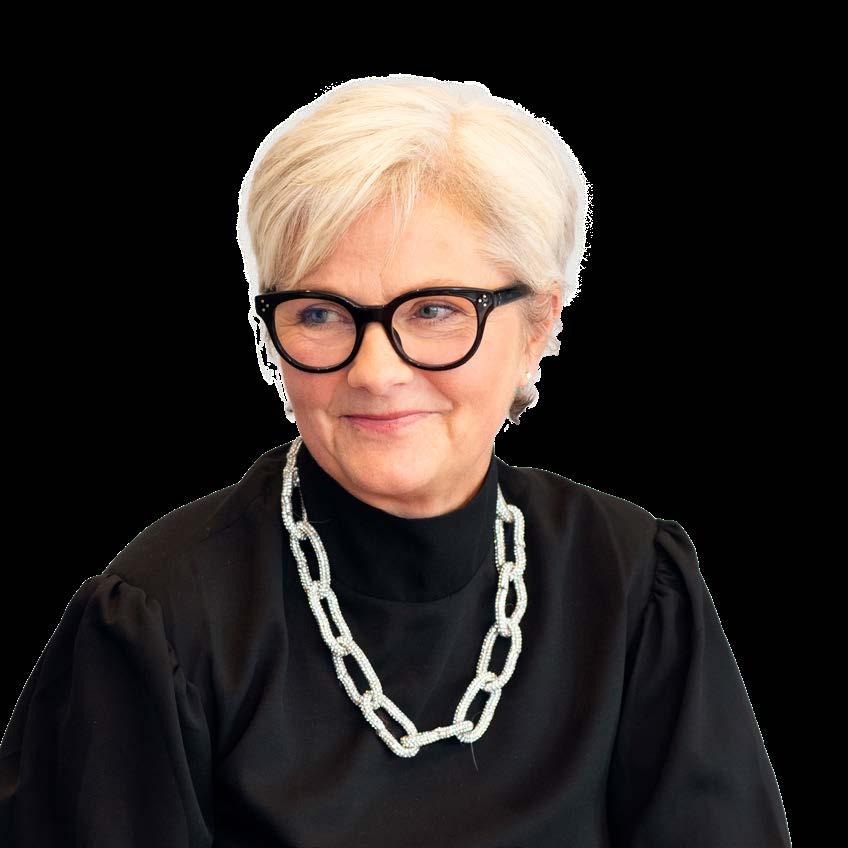
The challenges for The Swedish Club’s Human Resources function in 2023 were considerable, with a new Managing Director at the helm and a programme of strengthening and consolidation of its Management Team.
“Our priority was to make sure these changes went smoothly,” says Britta Patriksson. “We were pleased to see that the Club’s 2023 employee satisfaction survey delivered very encouraging feedback, with high levels of satisfied employees, confidence in the Managing Director and Management Team, and willingness to recommend the company.
“We were also focused on opening the new office in Singapore and setting up the new branch in London, with administration and employment contracts to be organised.”
Alongside all this, a new HR strategy was developed, with a renewed focus on talent acquisition and retention, and administration functions were streamlined.
In 2023, the Club initiated an ongoing competence mapping and defining project aimed at leveraging specialist knowledge and experience across its offices, with the goal of enhancing the quality of support for its members. “This initiative will feed into an update of job titles, descriptions, and roles to ensure alignment with the expertise available within the organisation,” explains Britta. “We carried out a successful pilot across the claims handling functions and it will now be rolled out into to other areas.”
Last year, the Club set up a project to examine individual functions and review the work carried out across departments. This resulted in a clearer overview of the various processes, which could be revised and changed to be more efficient. The Swedish Club employs 140 people across head office and local offices and has set itself a goal to become the premier employer in the maritime sector.
“We have always focused on attracting, recruiting, and retaining talented people, says Britta. “Job satisfaction and retention depends on continuous learning, career and growth opportunities.”
The Club also continues to develop its employer branding and is proactive when it comes to attracting new talent. For example, Britta is coordinating a new joint initiative with the Swedish Shipping Association, Skeppshypotek, Stena and Wallenius which will support two trainees for 18 months, who will have the opportunities to explore the different areas of the maritime business. “On a global level, we are perceived as an attractive employer with a solid and professional reputation,” states Britta.
Furthermore, the Club takes pride in maintaining a balanced gender representation within its workforce, recognising the key role of diversity in fostering a vibrant and inclusive organisational culture.
In summary, The Swedish Club’s HR function remains steadfast in its pursuit of excellence, guided by a commitment to innovation, talent development, and organisational resilience.
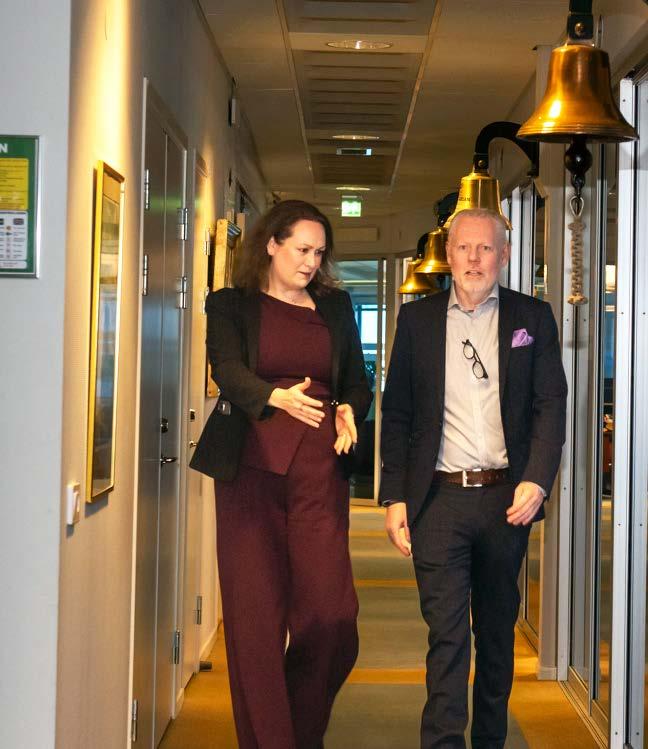

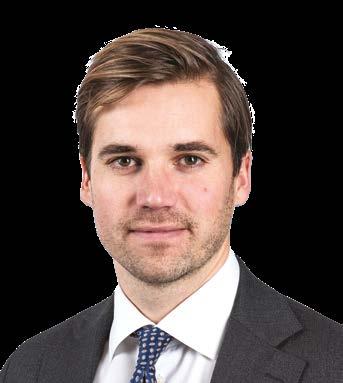
During the year Team Greece, under the leadership of Ludvig Nyhlén, has continued to flourish, moving to a state-ofthe-art office in Paleo Faliro, Athens, and seeing the growth of its team, signalling its continued commitment to this important market. Thanks to extraordinary support from members and brokers Team Greece has seen continued membership growth and improved premium adequacy and is well positioned to further strengthen existing and new relationships in the region.


Lars A. Malm became Managing Director and Area Manager for the Club’s Hong Kong office in 2023, contributing his broad range of claims, loss prevention and business development skills to further expand and serve this important shipping hub. At present, approximately 50% of the Club’s business is centred in this important region. Former Managing Director, Ruizong Wang, continued as Chairman of The Swedish Club Hong Kong Ltd.

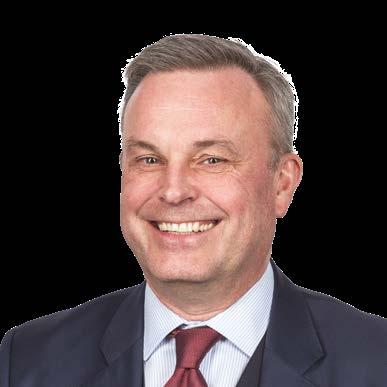
Team Norway holds a special position among the Club’s regional offices, operating in the specialist markets of offshore energy and construction risks, in addition to regular marine risk markets. In 2023 Area Manager Tore Forsmo focused on portfolio quality and growth through targeting well performing business sectors, and although the Club’s offshore energy book has been negatively affected by oil prices, this reduction has been more than compensated for with a profitable growth in builders’ risks.


Team Singapore celebrated its first full year of operations, under Area Manager Bryan Png. Supporting one of the most important maritime hubs in the world, Team Singapore and Team Hong Kong work closely together, enabling the Club to deliver enhanced underwriting, claims and loss prevention services. Since inception, Team Singapore has achieved healthy business growth and quickly earned a good reputation within the maritime community as a result of the personalised service offered by the team and its solution driven mindset.

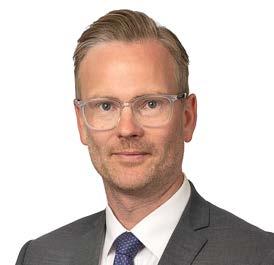
Fredrik Bergqvist assumed the role of Area Manager for Team Sweden in the summer, as part of the Club’s drive to strengthen the management team and foster talent. Throughout 2023, efforts have been directed towards cultivating a culture of teamwork, driving collective skill development, and fostering a collaborative environment where team members are encouraged to share knowledge and ideas. Additionally, there has been a rigorous focus on exploring growth opportunities within the region and strengthen partnerships with existing and potential clients.


In 2023, the Club announced the opening of an expanded London office, with Tord Nilsson at the helm from early 2024. Former Area Manager, Lars Nilsson, took on a head office role as senior advisor to Thomas Nordberg. In the autumn the team moved into larger premises in the heart of the city and at the end of the year it obtained its permanent licence to deliver a full-service marine insurance offering, enabling the Club to build even stronger relationships with existing clients and forge new partnerships within this vibrant shipping, insurance and reinsurance community.



The Swedish Club is firmly committed to the goals for sustainable development adopted by the United Nations, and we are constantly evaluating new ways to systematically add value in line with these goals. Primarily this is the right thing to do, but we also recognise that this commitment is demanded from us by our members and business partners.
We actively seek to implement these principles and to incorporate ethical guidelines in all aspects of our operations. It is our ambition to constantly improve and develop our practices in line with developments in the fastmoving global society and industry, of which we are part.
The Club is now preparing for the implementation of the EU’s Corporate Sustainability Reporting Directive (CSRD), which enters in force in 2025. This will provide us with a stricter framework for required priorities and action points and is expected to further structure our efforts in this very important area.
Thomas Nordberg, Managing Director
The Swedish Club (hereafter the Club) is an independent, self-managed, mutual insurance company headquartered in Gothenburg, Sweden, with offices in Hong Kong, Singapore, Oslo, London, and Athens. It has been in existence since 1872. As of 31 December 2023, the number of staff was 136. Mutuality means that the Club is owned and controlled directly by the policyholders (hereafter “members”). The interests of the Club’s management and Board of Directors are, therefore, identical to the collective interests of the members. The mutual nature and self-management of the Club puts it in a unique place among its competitors.
The Club’s purpose is to provide marine insurance to shipowners and other ship operators worldwide. The liability insurance (P&I) provided by the Club, and through the Club’s reinsurance arrangements, is a key factor in enabling world seaborne trade, the protection of the marine environment, as well as compensation to legitimate victims of maritime accidents. The Club’s core business is, therefore, a vital component in supporting a well-functioning and sustainable society.
As an insurance company, the Club is subject to stringent regulatory requirements, which prompts equally stringent regulatory compliance. Sound business practices and stability in the operations are safeguarded by robust processes for internal control and a holistic enterprise risk management system. This system is carried out through a control cycle that involves the systematic identification, valuation, monitoring and reporting of all existing and emerging risks. The Club’s assessment of its risks and how these risks are managed are regularly reported to the Swedish Financial Supervisory Authority and other stakeholders, internally and externally. The Club’s core values are Committed, Reliable and Proactive. These core values are central to the Club’s operations and sustainability over time.
Further details of the Club’s business model can be found in the Annual Report 2023.
This Sustainability Report addresses the sustainability report requirements as a matter of Swedish law.
The Swedish requirements are:
1. Environment;
2. Social and staff-related questions;
3. Respect for Human Rights; and
4. Combatting corruption.
The report also covers the UN Sustainable Development Goals which have been adopted by the Club. The adopted goals are listed on page 38.
Given the nature of shipping, it is impossible to eradicate all maritime-related accidents. As risk manager, insurer and investor, the Club - along with other marine insurersplays an important role in promoting economic, social and environmental sustainability and development. The Club has a long-standing commitment to assisting its members in managing maritime risks - thereby minimising any negative effect on the environment and society.
The Club is committed to preventing maritime accidents through proactive loss prevention initiatives and risk analysis. By providing proactive loss prevention and relevant insurance solutions, the Club aims to minimise any negative consequences to the environment and society as a whole, at the same time as it services its members. Sustainability therefore is - and has for a long time been - at the core of what the Club delivers.
The Club’s Board of Directors adopted an ESG Framework Policy at its October 2020 meeting. The purpose of the Club’s ESG Framework Policy is to provide the organisation with a declaration of intentions for the Club’s work on sustainability. The policy aims at assisting in establishing a common view of what sustainability means to the Club, as well as providing guidance to its employees and members. The ESG Framework Policy is a forward-looking document which is subject to annual review.
The Club’s ESG Framework Policy takes the four principles for sustainable insurance - as defined by the United Nations Environment Programme’s Finance Initiative (the UNEP FI) - as the starting point, namely:
a) To embed ESG in the Club’s decision making;
b) To raise awareness about ESG;
c) To promote widespread action with ESG; and
d) To demonstrate accountability and transparency within the ESG area.
To further assist the work in the ESG area, the Club’s ESG Framework Policy adopts four of the United Nations’ Global Goals for Sustainable Development to provide direction in the Club’s further ESG efforts.
The UN Sustainable Development Goals (SDGs) are, as identified by the UN, the blue-print for achieving a better and more sustainable future for everyone.
The goals are all inter-connected and intended to address global challenges.
More information about all 17 goals is available on the following site: UN Sustainable Development Goals (https://www.un.org/sustainabledevelopment/ sustainable-development-goals/)
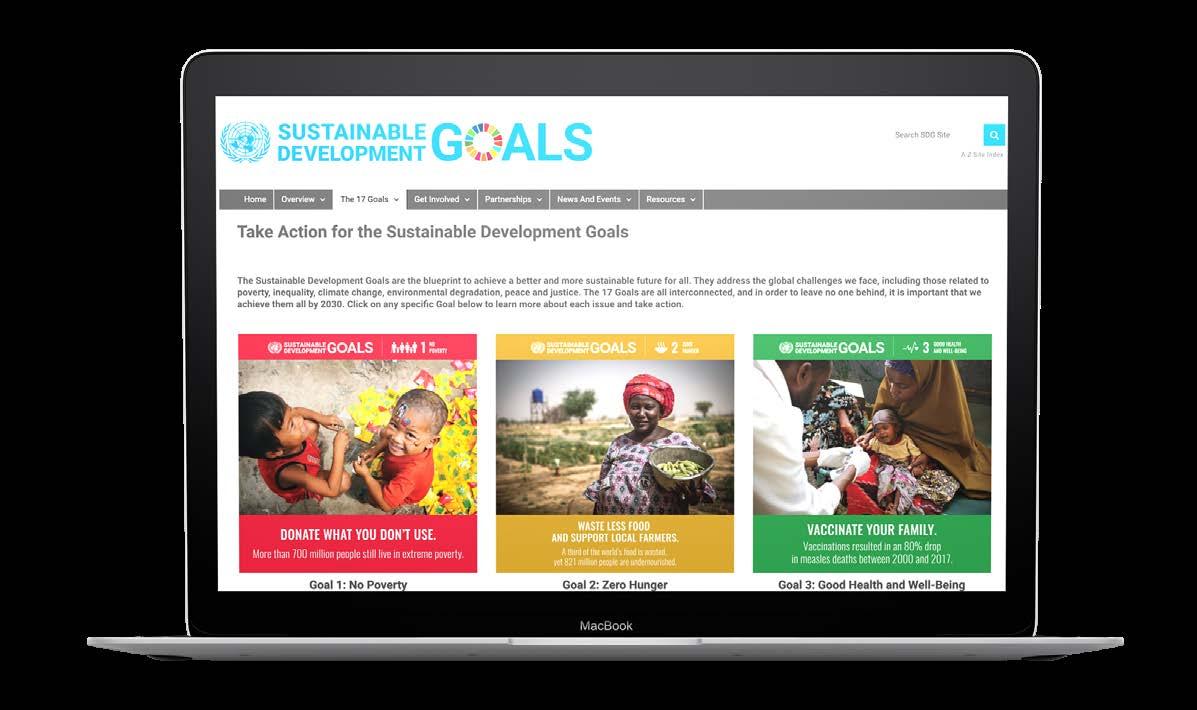
The UN Sustainable Development Goals the Club uses as a framework for its sustainability work are:
• UN Goal 14: Life Below Water: The Club will work to safeguard life below water through active loss prevention and relevant insurance solutions to its members.
• UN Goal 12: Responsible Consumption and Production: The Club will promote the responsible consumption of water, energy, and food.
• UN Goal 3: Good Health and Well-Being: The Club will promote health and safety in people’s working life, on-shore as well as off-shore.
• UN Goal 16: Peace, Justice and Strong Institutions: The Club promotes the rule of law and works against the use of bribes and other illegal or illicit activities.
The main ESG risks in the Club’s business segment, as a marine insurance provider, are:
• Inadvertently providing insurance coverage for illegal fishing, illegal shipping activities, intentional pollution and illegal scrapping of ships; and
• Inadvertently providing insurance coverage for breaches of climate-related emission levels, labour and trafficking laws and regulations, poor worker safety records and money laundering.
Following is an overview of how the Club works to facilitate sustainability and mitigate the ESG risks within its business segments.
The Club makes significant efforts to safeguard environmental interests in its routine work. As part of its loss prevention activities, the Club regularly produces publications and holds workshops on how to avoid marine casualties, mitigate marine risks and mitigate the environmental impact through advice about ship bunker fuel management and information on environmental regulations relating to the shipping industry.
The Club’s Loss Prevention team works in close cooperation with the Club’s claims handlers to understand and advise members on what causes maritime accidents. Emergency Response Training is offered to members to stress-test their organisations. It further creates an understanding of ways to cooperate among stakeholders to handle and minimise the adverse consequences of maritime casualties. The Club’s Marine Insurance Course and Marine Insurance Seminars - made available to members and business partners on an annual basis - are important means to educate and raise awareness of the importance of marine insurance and casualty response.
The Club’s initiative Trade Enabling Loss Prevention (TELP) is at the forefront of providing shipowners with up-to-date proactive loss prevention advice to prevent and minimise loss and accidents at sea. TELP was launched in January 2020 and is a free-of-charge service for members. It is aimed at increasing safety awareness in specific areas and ports worldwide - thereby reducing claims. The information provided through the TELP service was expanded and enhanced further throughout 2023. TELP has enabled efficient and targeted distribution of information on claims experience and risk factors, as well as relevant COVID advice to the Club’s membership where their ships approach particular ports.
The Club participates in a comprehensive risk-mitigating training programme through The Swedish Club Academy. The programme was developed after having realised that the majority of marine casualties occur due to human factors. The objective of the programme is to establish safe and sound attitudes and behaviour within organisations. The training is conducted at over 70 facilities in 31 countries, licensed by the Club. The Club subsidises its members’ start-up fee when first signing up to participate in the programme.
In 2020 the Club became an official corporate member of the Big Blue Ocean Cleanup, and the Club continued its support throughout 2023. The Big Blue Ocean Cleanup helps keep the oceans clean, protect marine wildlife and support the development of innovative technologies. The Big Blue Ocean Cleanup runs free educational workshops and provides resources for schools around the world, inspiring every generation to take action and protect our blue planet.
The Club is a sponsor of HELMEPA - the Hellenic Marine Environment Protection Association, the pioneering voluntary commitment of Greek seafarers and shipowners to safeguard the seas from ship-generated pollution, undertaken in Piraeus on 4 June 1982. HELMEPA operates under the motto, “To Save the Seas”.
In 2020 the Club became an official corporate member of the Big Blue Ocean Cleanup

Being an insurance company, the impact the Club’s own operations have on the environment comes primarily from the use of office space, any waste the operation of its offices generates, and the business travel undertaken by its employees.
The Club seeks to apply high standards to operate in an eco-friendly way. This includes recycling waste, minimising the use of paper and using video conferences instead of travelling, to the extent that it is reasonable in the business context the Club operates in. Club employees are expected to travel responsibly and consider what the best way to attend a meeting, inspect an incident site, or manage a casualty to achieve and maintain the service-level expected.
Guidelines on the Club’s travel policy for employees is provided in The Swedish Club’s Personnel Handbook. The Club is assisted by its worldwide network of correspondents, experts and lawyers in its routine claims handling activities. A physical presence is often necessary to maintain a close relationship with the Club’s members and to properly manage marine casualties. It is therefore unavoidable to some extent for the Club’s employees to travel by airplane.
To encourage more environmentally-friendly commuting, the Club facilitates easy access to public transport fares and enables bicycle parking as an alternative to cars in the majority of its offices. There is also the possibility to charge electric cars at the Club’s Gothenburg office.
Being a mutual marine insurance provider, the Club has an important role to play in supporting the decarbonisation of shipping by ensuring that there are relevant insurance solutions made available for the emerging risks its members may face. Alternative fuels and new ship design are changing the landscape of shipping. For the Club it is important to honour its heritage by supporting the technological transition by providing relevant insurance solutions. After all, the Club was founded in 1872 by shipowners finding themselves unable to procure relevant insurance for their modern ships.
Social responsibility is a central part of the Club’s operations. The Club has an Ethical Code of Conduct which each employee reviews and gives consent to annually. Adherence to the ethical guidelines is followed up at regular employee/manager meetings, as well as through interactive questionnaires on the Club’s intranet.
Another important social dimension involves the community that ownership in the Club entails. The Club’s membership stretches from local bunker barge operators to the world’s largest state-owned shipowners. Furthermore, some of the Club’s members are based in countries that have tense political relationship with each other and, as a result, have little or no business relationships. Therefore, the Club serves as a unique platform in creating a community and building relationships beyond political and geographical boundaries.
The Club supports the local community by sponsoring The Swedish Sea Rescue Society (SSRS). The SSRS is a non-profit organisation founded by dedicated volunteers in 1907. More than 100 years later, the dedication still runs deep among the volunteers, who are always prepared to help whenever someone needs assistance at sea.
The Club is also a proud sponsor of the magazine ‘Faktum’, a monthly magazine sold by, and for the benefit of, homeless people, raising awareness of the situation and providing a way back.
Being a mutual marine insurance provider, the Club has an important role to play in supporting the decarbonisation of shipping
The Club is a true knowledge-based company. As such, it is entirely dependent on the expertise, as well as the wellbeing of its employees. The Club is dedicated to growing and developing its staff. Equally important is promoting good health, motivation and commitment through initiatives that encourages a healthy life-style, whilst also developing job skills. The Club is a signatory to collective bargaining agreements through its membership in The Swedish Insurance Employers’ Association (Försäkringsbranschens Arbetsgivareorganisation, FAO) and engages in dialogue with the local unions.
Every second year, the Club measures employee engagement and satisfaction through a survey carried out by a third party. Following the survey in 2023, the KPI for employee work satisfaction was significantly higher than the Swedish national industry benchmark. Further, a majority of other KPIs came out better or levelled with the benchmark. The employee satisfaction level remains on the same high level as in the previous surveys from 2017, 2019 and 2021. It is high for all employee groups. Satisfaction with physical, as well as the social working environment is included in the survey. Results are followed up over time and any issues arising are actively addressed.
The survey covers areas of discrimination and bullying. A field in which the Club has a zero tolerance. According to the Club’s written policy on equal treatment, the Club shall safeguard equal opportunities or employment, education, promotion, and development in the work role, regardless of gender, sexual orientation, ethnicity or religion. The Club has a policy to combat discriminatory behaviour.
The Club strives for an equal split between men and women in the Club’s different functions and organisational levels based on merits. The Club’s gender division in 2023 was 49% women and 51% men. The Club facilitates the possibility to combine work with family life. In 2023, 13 employees used the opportunity of being on parental leave. An annual mapping of salaries is carried out to detect and enable rectification of undue differences in the salaries between men and women.
The use of digital means for Club internal activities has enabled a number of training sessions and seminars to be held on a wide range of topics. These include stress-management and well-being. In 2023 the Club organised training sessions and employees participated in events. During spring 13 members of staff together with a number of clients ran the Gothenburg Half-Marathon, Göteborgsvarvet. The Club also held skiing sessions for employees, as well as yoga classes. In addition, an activity challenge was arranged.
The Club is dedicated to growing and developing its staff

The Club’s work in identifying and mitigating risks include several tools that are used for safeguarding respect for human rights of both the Club’s employees and the Club’s business associates
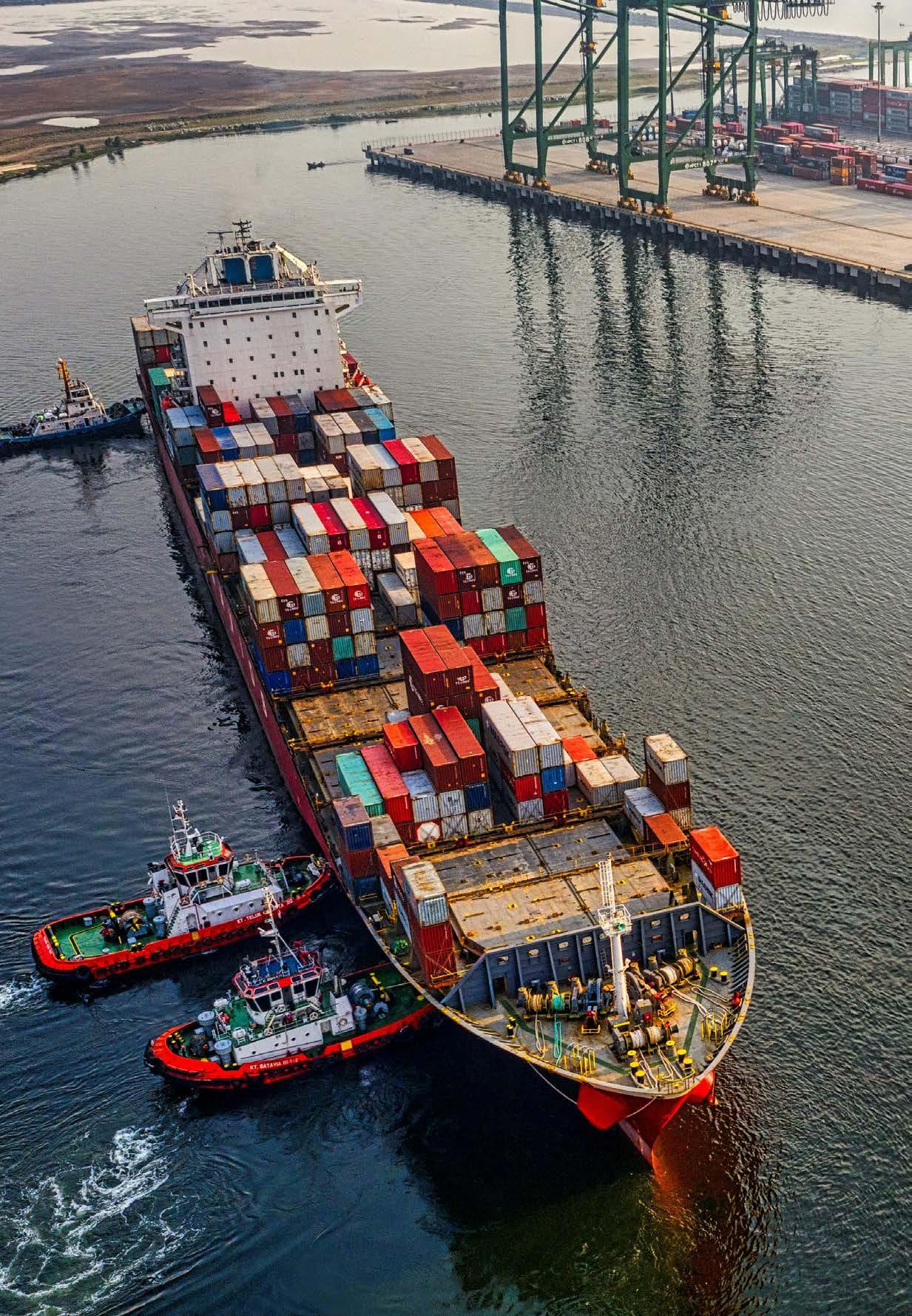
Sound business behaviour and compliance with internal and external regulations are ultimately dependent on the acts of the individual employee. This includes safeguarding the values set out in this sustainability report.
The Club has several channels through which employees can alert management about any abuse or wrongdoing. Annual risk workshops are held under the auspices of the risk management function. These workshops aim to target operational risks. These include fraud, malicious damage, employment practices, business practices, workplace and public safety.
The Club has two web-based applications where risks, as well as incidents - “near misses” – in the line organisation, are registered. The findings are compiled and presented to management and the Club’s board on an annual basis.
The Club has a whistle-blower policy that enables employees to submit complaints on a confidential basis, through an external law firm.
The confidential complaint may relate to amongst others: noncompliance; any kind of illegal or unethical activity; or any other abusive or erroneous behaviour which has an adverse impact on an individual, the Club, its members, other stakeholders or the environment.
The Club’s work in identifying and mitigating risks include several tools that are used for safeguarding respect for human rights of both the Club’s employees and the Club’s business associates. The P&I insurance provided by the Club contains elements for enabling due compensation to be reimbursed by the Club to its members for compensating their seafarers for work-related illness and injuries under applicable contracts, law and convention limits when serving on insured ships.
The P&I insurance has been extended to include financial security, required under the Maritime Labour Convention, for repatriating seafarers as well as up to four months’ wages, in case the seafarers are abandoned by their employer on a ship entered with the Club for P&I risks. This was done in response to a request put forward by the International Labour Organization.
The Club has zero-tolerance towards corruption and bribery. The Club applies the UK Bribery Act 2010 as a benchmark for its employee policy. This is, in general, more stringent than the equivalent Swedish legislation that would otherwise apply. An annual sign-off procedure was introduced in 2020 and performed also in 2023, whereby all employees read and sign-off on their understanding of the Club’s Ethical Directive, among other policy documents.
To combat corruption, the Club uses a market-leading screening tool provided by World-Check whereby all the Club’s members and insured vessels are screened on a monthly basis. The screening includes global sanctions lists, global enforcement and warning lists, global politically exposed (PEP) lists and global state-owned entity lists (SOE).
The screening also includes corporate managers who are directly or indirectly connected to, or associated with, an embargoed country or entity which carries related or other risk-relevant information.
World-Check also draws on hundreds of thousands of credible media sources to monitor all the categories above. It is also used to identify and maintain a lot of profiles related to individuals convicted of one or more of the predicate offences as defined by the Financial Action Task Force (FATF). The purpose of the screening is to avoid the Club doing business with inappropriate companies or individuals.
In 2023 the Club continued to enhance its “know your client” routines through which its membership is reviewed. While the Club, being a non-life insurer, is not subject to the Swedish Anti-Money Laundering Act, it has voluntarily introduced a number of measures to enhance its routines for anti-money laundering and countering the financing of terrorism.
During the year, the Club has continued and refined its work using an AIS tracking system, enabling the Club to carry out more in-depth due diligence on vessel’s trading patterns and ownership structures to combat illicit trade. Compliance data and automated screening against sanctions list have been integrated into the Club’s compliance and risk assessment tools to enable early identification of risk factors. The Club utilises compliance data from IHS MIRS to assess

The Club has zero-tolerance towards corruption and bribery
prospective and existing members before entry into the Club and throughout the insurance relationship. Automated backstops - based on sanctions lists - were incorporated into the Club’s insurance and payments systems in 2021 to further enhance the anti-money laundering activities. These measures help mitigate the risk of inadvertently providing insurance cover for illicit activities as well as to mitigate the risk of the Club inadvertently facilitating money laundering.
It is noteworthy that illegal acts, as a matter of Swedish law, are uninsurable as a result of being contrary to public policy and good insurance practice. As an example, to enhance this fact, the Club’s Rules for P&I insurance expressly excludes liabilities arising from unlawful trade.
Finally, all the Club’s board members, members of the management group and personnel responsible for the Club’s central functions (actuary, risk managers, internal audit and compliance) are subject to an equivalent screening process to ensure that regulatory fit and proper standards are met by these individuals.


The Board and the Managing Director of The Swedish Club (Sveriges Ångfartygs Assurans Förening) hereby present their annual report for the year 2023, its 151st year of operation.
The Swedish Club (also referred to in this report as “the Club”) is a marine mutual insurer, headquartered in Gothenburg (Sweden), with service office in Athens (Greece) and branch offices in Hong Kong (China), London (UK), Singapore and Oslo (Norway). The Club also has a subsidiary in Hong Kong. The Swedish Club is both owned and directly controlled by its members.
The Club’s activities concern marine insurance, in the following classes of non-life insurance: Ship (Marine & Energy), Ship liability (Protection and Indemnity, P&I) and Defence (Freight Demurrage & Defence, FD&D). The Club also undertakes accepted reinsurance.
In accordance with the Swedish Annual Accounts Act, the Club’s subsidiary in Hong Kong has not been consolidated as it is of lesser importance with regard to true and fair view requirements.
During the year, the company has shown moderate premium growth through price adjustments and volume increases, which overall contributed to stabilized, close to break even, results and positive cash flows from insurance operations. The performance of the investment portfolio was supported by improving stock markets and attractive interest rates which both contributed to favourable returns. The Club maintained its profile of investment portfolio’s risk unchanged throughout the year. The Club’s financial position in terms of basic own funds and investment assets strengthened notably during the year. Despite improved basic own funds the solvency ratio, according to the Solvency II regulations, remained close to unchanged due to the favourably larger investment portfolio and premium growth projections. The solvency requirement continues to be met with a good margin.
The two rating agencies Standard & Poor’s and AM Best both confirmed their ratings of the Club, i.e., BBB+ and A- respectively.
Since the invasion of Ukraine in 2022, the EU and G7 countries have introduced a large number of broad economic sanctions against, among others, Russia. Due to rapid and continuous changes in the sanction packages, the Club continuously strengthens its capacity to handle the changed risk environment.
The following is a brief commentary on the income statement and balance sheet. For more detailed information, please see the Notes (page 55).
For 2023, the result before appropriations and tax was a profit of USD 30.0 (-41.7) million. Other comprehensive income, related to hedging of future operating expenses denominated in SEK into USD, was USD 3.7 (-4.8) million before tax.
The relationship between the result expressed in USD and SEK is shown in the table below as a change in free reserves:
Gross premiums written in 2023 amounted to USD 243 (230) million. Following the deduction of outgoing reinsurance premiums totalling USD 56 (58) million, premiums written amounted to USD 187 (172) million. Earned premiums, net of reinsurance, amounted to USD 179 (169) million.
The Club’s financial position in terms of basic own funds and investment assets strengthened notably during the year

An allocation of USD 12.7 (0) million from the investment income is attributed to insurance activities in 2023. See Note 4. Claims incurred, net of reinsurance, amounted to USD 150 (138) million. Changes in other technical provisions amounted to USD 3.3 (0.8) million. The total costs for net claims incurred correspond to 82 (81)% of earned premiums, net of reinsurance.
During the year, there were 42 claims reported (whereof 7 from the IG pool system) in excess of USD 0.5 million. In 2022, there were 30 such claims (whereof 7 from the IG pool system).
Operating expenses for insurance activities amounted to USD 37 (35) million. In relation to earned premiums, net of reinsurance, this level corresponds to 20 (21)%.
The balance on the technical account amounted to USD 8 (-3) million.
The combined ratio was 102 (102)%.
The combined ratio for P&I was 98 (116)%. Earned premiums, net of reinsurance, amounted to USD 93 (82) million. The insurance year claims cost for other clubs’ pool claims was USD 13 million in 2023 and it was USD 8 million in 2022. Claims incurred, net of reinsurance, decreased from USD 80 million in 2022 to USD 73 million in 2023. The loss ratio for the year was 79 (97)%.
As of 31 December 2023, the P&I portfolio, including Charterer’s liability, consisted of 2,286 (2,462) vessels with gross tonnage of 90 (93) million.
The combined ratio for FD&D was 81 (92)%. As of 31 December 2023, the FD&D portfolio consisted of 1,447 (1,575) vessels with gross tonnage of 66 (62) million. Earned premiums, net of reinsurance, amounted to USD 9.5 (9.1) million. Claims incurred, net of reinsurance, decreased from
USD 7.2 million in 2022 to USD 6.3 million in 2023. The loss ratio for the year was 66 (78)%.
The combined ratio for Marine & Energy was 110 (87)%. Earned premiums, net of reinsurance, amounted to USD 77 (78) million. Claims incurred, net of reinsurance, increased from USD 50 million in 2022 to USD 68 million in 2023. The loss ratio for the year was 88 (65)%.
At the end 2023 the Marine & Energy portfolio consisted of 6,087 (5,203) vessels, with gross tonnage of 337 (263) million and covered insured value of USD 24 (24) billion. The number of vessels insured for Loss of Hire was 940 (963) with a gross tonnage of 50 (49) million.
The financial result before transfer to technical account, including exchange rate differences amounted to USD 34 (-39) million.
The return on the investment portfolio was 9.2 (-9.8)%, corresponding to an investment result of USD 34 (-39) million. The result from interest-bearing securities was USD 21 (-22) million, including exchange revaluations of USD 1 (-2) million, and the result for equity holdings amounted to USD 12 (-15) million. At the end of 2023, the value of the Club’s investments had grown by USD 86 million as a result of the positive investment result of USD 34 million and investments of positive cash flows from the insurance activities amounting to USD 52 million. The total invested amount of USD 436 (350) million was composed of 85 (85)% interest-bearing securities and 15 (15)% equity holdings.
The result for forward exchange contracts was USD -1 (0) million, miscellaneous financial income and expenses amounted to USD 1 (0) million. Exchange differences from revaluation of insurance-related items amounted to USD 1 (-2) million.
Other comprehensive income, related to hedging of future operating expenses denominated in SEK into USD – for the purpose of reducing the currency risk in USD statements –was USD 4 (-5) million. See Note 1.
For 2023, the provision for claims outstanding was USD 400 (395) million.
The value of the Club’s investment assets amounted to USD 436 (350) million.
At year-end, Hydra receivables (see Note 20 and Note 2 in the section on counterparty risks) had an estimated value corresponding to USD 20 (16) million. These are reported in the balance sheet under the heading “Other assets”.
The Club’s Sustainability Report, in accordance with EU Directive 2014/95 (included in the Chapter 6, Section 12 of the Swedish Annual Accounts Act, 1995:1554 (ÅRL)), has been published on the Club’s website, www.swedishclub.com/ about/esg-and-sustainability.
The Swedish Club does not have any significant events to report on items that have not previously been communicated but relate to periods up to the balance sheet date. After the balance sheet date, insurance activities have developed in line with the established goals and expectations. The Club’s investment portfolio has started 2024 delivering positive returns.
The Club’s rating, A- “negative outlook”, was confirmed by AM Best in January 2024.
The Swedish Club is a knowledge-intensive organisation. The commitment, competence and performance of employees are decisive factors for the organisation’s success and competitiveness.
The Swedish Club intends to remain an attractive employer by having a progressive human resources policy, a healthy organisational culture and well-established core values. The Swedish Club’s core values are as follows:
Proactive
• We are proactive in our approach.
• We respond in a forward-thinking and proactive manner and focus on cost-efficient solutions.
Reliable
• We are reliable in our values, and we stand behind them.
• Through honesty and fair treatment, we are able to gain confidence and ensure continuity.
• We are committed in everything we do.
• We build and develop relationships of mutual benefit.
• Our service is based on respect and professionalism.
The average number of employees during the year was 117 (see Note 29 for more information).
The maximum total cost of the bonus program for employees has been set at 10% of the Club’s salary costs including social security expenses. No provision for bonuses was made in 2023.
Note 29 also contains information on the principles for establishing salaries and benefits for senior management.
The Swedish Club’s operations give rise to various types of risks that could have an effect on its result and financial position.
There are four main categories of risk:
• Insurance risk
• Counterparty risk
• Operational risk
• Financial risk
An Internal Capital Model (ICM) is used for calculating and monitoring the risks. The model is a key component of the Club’s process for Own Risk and Solvency Assessment (ORSA). It is also an important control mechanism for calibrating capital needs.
Note 2 contains an overview of how these risks affect operations and how the Club manages them.
The global economic outlook for the year altogether is difficult to assess. The consequences of the wars in Ukraine and Gaza, and the broader implications thereof, constitute uncertainty to world trade and economic development. The Club’s insurance operations are not expected to be significantly affected by short-term economic fluctuations, but the impact on the asset management can be significant. As one result of the uncertainty, the Club – going into 2024 – maintains its investment portfolio’s risk exposure at the lower level introduced during 2022.
For 2024, the Club continues to prioritise continued risk-based quality improvements and price adequacy recovery over volume growth. We estimate that the total claim costs for 2024 will be below the volume-adjusted levels of 2023. Initially, 2024 has started with marginally positive developments on equity markets and slightly decreasing interest rates, which has been favourable for the Club’s asset management.
Our assessment is that the Club’s relative competitiveness will hold up well and the Club’s strong financial position provides security for all of the Club’s business partners and members.
For the financial year January through December.
For the financial year January through December.
The annual report has been prepared in accordance with the Law of Annual Reports in Insurance Companies (ÅRFL) and The Swedish Financial Supervisory Authority’s rules, and regulations regarding annual reports for insurance companies (FFFS 2019:23) and the Swedish Financial Reporting Board’s recommendation RFR 2. Law-limited IFRS have been applied, which are international accounting standards that have been adopted for use with the limitations that follow from RFR 2 and FFFS 2019:23. This means that all of the EU approved IFRS and statements have been applied, to the extent possible given Swedish law and with consideration given to the relationship between accounting and taxation.
Unless otherwise stated, all amounts in the financial statements are in USD thousands.
The Club has a subsidiary in Hong Kong which, in accordance with Chapter 7, Section 3a of the Swedish Annual Accounts Act (ÅRL), has not been consolidated, since the subsidiary is considered to be of lesser importance with regard to true and fair view requirements.
The Club also has holdings in the associated company, The Swedish Club Academy.
USD is the Club’s accounting currency since most of the Club’s income and expenses are in USD. It is also the most significant currency used when making technical provisions and therefore, the primary environment in which the Club runs the business.
The Club converts transactions in foreign currency to the currency rate applicable on the transaction day, both to SEK and to USD. This financial statement is reported in USD while SEK is used in official Swedish regulatory reporting, in accordance with law-limited IFRS.
All assets and liabilities are registered in the original currency and converted to USD and to SEK at the end of the
reporting period. This has the effect that the result in the two reporting currencies differs as the bulk of the balance sheet consists of USD. See Note 2.
Assets and liabilities are reported at cost, except for certain financial assets and liabilities that are measured at fair value. Financial assets and liabilities that are measured at fair value consist of assets classified as financial assets measured at fair value through profit or loss.
To prepare the financial statements, it is sometimes necessary to make certain assessments and estimates. These are based on experience and assumptions. Assessments and estimates that have been made impact the amounts reported in both the balance sheet and income statement.
The effects of changes in estimates are reported in the period in which the change occurred, provided that the change only has an effect on that period. Alternatively, if the changes affect both current and future periods, changes are reported in the period in which the change occurred and in future periods.
The assessed value of premium receivables is equal to the amount expected to be received. Reviews of outstanding items are done on a continual basis.
The assessed value of recourse receivables is equal to the amount expected to be received.
The assessed value of reinsurance receivables corresponds to the amount agreed in the insurance contract.
Important estimates and assessments associated with technical provisions have been based on assumptions about future claims payments. Estimates are based on the Club’s own historical statistics on prior claims outcomes. When estimating technical provisions, consideration is given to such things as unpaid claims, claims development including changes in the Club’s assumptions within the scope of International Group of P&I Clubs,
changes in legislation, judicial decisions and general economic development.
Hydra receivables are estimated to have a value equal to the Club’s share of the captive company, Hydra.
The accounting principles stated below have been applied consistently to all periods presented in the financial statements.
New and revised standards applied by the Club
None of the new standards or amendments published after 1 January 2023 have had a significant impact on the Club’s financial statements.
New standards, amendments and interpretations to existing standards that have not yet entered into force and have not been early adopted. Several new international accounting standards, along with revisions to standards and interpretations will come into force as of the next financial year. None of these changes is deemed to have a significant impact on the accounting. The Club has no plans to elect early adoption on new or revised standards.
IFRS 17 entered into force as of January 1, 2023. The standard has been adopted by the EU. The Swedish Financial Supervisory Authority (FI) has announced that IFRS 17 will not be deemed to apply in statutory reporting.
All of the Club’s insurance contracts are defined as insurance contracts in accordance with FFFS 2019:23. Insurance contracts are reported and measured in the income statement and balance sheet in accordance with their financial substance rather than their legal form whenever there is a difference between the two. Items reported as insurance contracts must transfer substantial insurance risk from the policyholder to the Club. They must also obligate the Club to compensate the policyholder, or another beneficiary, if a predetermined or not excluded (depending on applicability) insured event were to occur.
Income taxes are comprised of current tax and deferred tax. Income taxes are reported in the income statement, attributable to profit and loss or other comprehensive income.
Current tax is tax that is payable or refunded for the current year, applying tax rates that have been decided or effectively adopted as of the reporting date. This also includes adjustments of current tax related to prior periods.
Deferred tax is measured according to the balance sheet method. The starting point is thus temporary differences between the carrying amount of an asset or liability and its tax base. The valuation of deferred tax is based on the extent to which the underlying assets and liabilities are expected to be realised or settled. Deferred tax is calculated by applying the tax rates and tax rules that have been decided or effectively adopted as of the reporting date. Untaxed reserves are reported including deferred tax liability.
Gross premium written is normally reported according to the maturity principle. This means that the gross premium written is reported in the income statement when the annual premium fall due for payment, or, when the first partial premium falls due for payment (this happens in cases where the contractual insurance period’s premiums have been divided into several partial premiums). Furthermore, in order for the gross premium written to be included, the term of the underlying insurance contract must start during the current accounting period. The method described above is also used for reinsurers’ share of premiums written.
Premiums earned reflect the proportion of the gross premium written that is attributable to the accounting period. The share of the premium income from insurance contracts pertaining to periods after the closing date is allocated to the premium reserve in the balance sheet. Calculation of the provision to the premium reserve is done by allocating the premium income to the proper period based on the underlying duration of the insurance contract. The method described above is also used for
reinsurers’ share of earned premiums.
The provision for unearned premiums for own account is revalued using the closing day rate of exchange. The result of this revaluation is shown under the heading “Investment income” or “Investment costs”.
A provision for remaining risks is made when future revenue and expenses during the remaining term of the insurance contract yield a deficit.
Investment income transferred from the non-technical account
Investment income is reported gross in the non-technical result. The Club uses a model for the calculation of investment income transferred to the technical account. It is based on the interest rate that corresponds to the United States 1-year bond yield at the beginning of the year in relation to average provisions for claims outstanding net of reinsurance The model compensates the insurance business with interest for the float generated during the period between premium payments and claim payments. No transfer is made in fiscal years in which the calculation yields an amount that is lower than the equivalent of USD 1 million annually.
The total net claims incurred for the accounting period includes claims paid during the period and changes in the provision for claims outstanding. In addition to claims in themselves, net claims incurred also includes claims handling costs. The provision for claims outstanding is calculated using expected nominal cash flows.
The provision for claims outstanding net of reinsurance is revalued using the closing day rate of exchange. Historical data on claims payments provides the basis for allocation of the provision to each relevant currency. Based on these statistics, the Club has chosen to make the assessment that the reserves are fully comprised of USD.
The proportion of the operating expenses related to claims handling is reported under the heading “Net claims incurred”. A portion of net operating expenses is also related to investment administration and this portion is reported as “Internal management
expenses”. Operating expenses in the insurance business include, besides administrative costs, also acquisition costs. Internal acquisition costs and internal management expenses are allocated in accordance with a model (see Note 7 and Note 11).
Realised profit/loss on divestment of investments is equivalent to the difference between the sales proceeds and acquisition cost. The Club’s investments are reported at fair value. Unrealised changes in values are reported in the income statement and can be defined as the annual change in the difference between fair value and acquisition cost.
The Club applies hedge accounting according to IFRS 9 as from 1 January 2022. For forward currency contracts entered into before 2022, the exchange rate as of 1 January 2022 will be used as the reference for the hedge accounting (instead of the spot rate at contract inception). The hedging contracts are expected to be effective over the entire contractual period. The hedged item consists of operating expenses denominated in SEK, mostly employee-related costs. Cash flows are spread throughout a month. The cash flow for the hedging instrument on the other hand is exchanged once a month. The fact that the hedged item and the hedging instrument are not matched on the same day will entail a limited ineffectiveness, however, this inefficiency is not material. The effectiveness is tested partly through a forward-looking (prospective) assessment and partly a retrospective evaluation. The type of hedging activity performed is related to the cash flows where the foreign currency risk is arising from highly probable forecasted operational expenses.
Financial instruments reported in the balance sheet as instruments:
• Accounts receivable (reported under the heading “Receivables”).
• Shares and participating interests
• Bonds and other interest-bearing securities
Items reported as liabilities or equity include:
• Trade creditors (reported under the heading “Liabilities”)
• Forward exchange agreements
Reporting of financial assets and removal from the balance sheet
A financial asset or financial liability is reported in the balance sheet when the Club becomes a party to the instrument’s contractual terms (economic approach), except for instances when the Club acquires or disposes listed securities (for these, cash/settlement approach is applied). Accounts receivables are reported in the balance sheet when an invoice has been sent. A liability is reported when the counterparty has completed performance and there is a contractual liability to pay, even if the invoice has not yet been received. Accounts payable, however, are reported when an invoice has been received. A financial asset is removed from the balance sheet when the rights in the agreement have been realized, expire or when the company loses control over them. The same applies to a part of a financial asset. A financial liability is removed from the balance sheet when the obligation in the agreement has been fulfilled or in some other way extinguished. The same applies to part of a financial liability.
Offset of financial instruments
Offsetting of a financial asset and financial liability and reporting them at a net amount in the balance sheet only occurs when there is a legally enforceable right to set-off and the intention either is to settle on a net basis or is to realise the financial asset and settle the financial liability simultaneously.
At valuation, financial assets are divided into the following categories:
• Financial assets measured at amortised cost
• Financial assets measured at fair value through profit or loss
• Financial assets measured at fair value through other comprehensive income
Initial recognition of a financial instrument is based on the purpose for which the instrument was acquired. The initial classification also determines how the
financial instrument shall be measured going forward, as described below.
Financial assets measured at amortised cost
These are balance sheet assets reported in the categories “other receivables” and “cash and bank balances”. Both are measured at amortised cost. Bank deposits have repayment cover. As such, anticipated credit losses are insignificant since the investments are secured by the Swedish State.
Financial assets measured at fair value through profit or loss
These are balance sheets assets as reported in “quoted shares” and “bonds and other interest-bearing securities”. The measurement method used is fair value through profit or loss because they are continually measured based on fair value. Measurement of the Club’s investment assets at fair value is at the current buying rate based on prices quoted on an active market regarding Level 1 and Level 2. Measurement of the Club’s investment assets at fair value regarding Level 3 is based on information from the Club’s investment manager. See Note 2.
Financial assets measured at fair value
These are forward exchange contracts measured at fair value through other comprehensive income. The measurement method used is fair value through other comprehensive income because they are continually measured based on fair value. The unrealised profits and losses that arise as a result of changes in market value is reported after tax via other comprehensive income and becomes a part of “other reserves” in equity until the underlying contracts of the assets have expired and are removed from the balance sheet.
Borrowings and other financial liabilities, such as trade creditors, are included in the category, Financial liabilities. These are valued at amortised cost. In the event that the measured fair value from forward exchange contracts is negative it is classified as a financial liability. See Note 2.
For a description of the methods and assumptions used by the Club to establish the fair value of financial instruments. See Note 2.
Intangible assets are valued at cost less accumulated amortisation and any impairment losses. Amortisation is calculated on a straight-line basis over a useful life of five years starting from the time when the system is put into operation.
Machinery and equipment are reported at cost less accumulated depreciation according to plan, which is based on the useful life of the assets plus any writedowns. Depreciation is calculated on a linear basis over a useful life of three or five years. For improvements made on property owned by others, depreciation is calculated on a linear basis over a 20-year period.
A subsidiary is a company that is subject to a controlling influence by the Parent Company. Controlling influence is the right to, directly or indirectly, formulate a company’s financial or operating strategies to obtain economic benefits.
Associates are companies in which the Group has a significant (but not controlling) influence over the operating and financial management, usually through holdings corresponding to 20-50% of the votes. Shares in subsidiaries and participations in associated companies are reported in accordance with the cost method. Any dividends received are reported as income.
Cash and bank (with the exception of minor cash amounts) consists of bank accounts and funds that have been transferred to asset management but not yet invested in assets.
The item includes allocated commissions associated with the signing of insurance contracts.
These costs are allocated in the same way as the allocation of unearned premiums.
The provision for unearned premiums is calculated strictly pro rata. In accordance with technical guidelines pertaining to insurance, testing is performed on a regular basis to
determine whether a provision needs to be made for remaining risks.
The provision for incurred and reported claims is based on individual, realistic assessments of individual claims using information that is available on the reporting date. Incurred but not reported claims, IBNR, is calculated using statistical methods that are based on experience of the number and extent of claims reported for prior accounting years. The provision for outstanding claims also includes a reserve for operating costs associated with settling outstanding claims. The provision for outstanding claims has been reported using undiscounted values.
The pension obligations are comprised of pension plans that are regulated through collective agreements and national insurance laws. The obligations consist of both defined contribution and defined benefit plans.
The Club’s obligations concerning contributions to defined-contribution plans have been reported as an expense in the income statement at the rate they are earned by employees performing services during the period.
The Club has older obligations for a few prior employees, and this is reported as a liability in the balance sheet.
Because the Club reports leasing in accordance with RFR 2 Accounting for Legal Entities, it is granted an exemption from the principles contained in IFRS 16. As such, there will be no change in how the Club reports leases.
The Club has operating leases consisting of leases for premises, cars and office machines for the duration stated in the agreement for each of these. Leasing fees are expensed over the contracted period based on utilisation. See Note 8.
Assets and liabilities in foreign currency are translated to USD at the closing day rates of exchange. However, shares in subsidiaries are valued using the rate of exchange prevailing on the acquisition date. For translation from a foreign currency to USD, the difference is reported in the income statement under the heading “Investment income or Investment costs”.
For the Club’s most important currencies, the following rates (prevailing on 31 December) have been used:
The Swedish Club´s risk management is carried out with the help of the company’s risk management system, which is an integral part of operations. Its goal is to create and maintain a good ability to identify, measure, manage, control, monitor and report risks that the Club is, or could become, exposed to. The risk management system is in line with the risk management directive adopted by the Board.
The Club has developed an Internal Capital Model (ICM) for quantifying its risks. The model is used as a control mechanism for management, the Own Risk and Solvency Assessment (ORSA), and in conjunction with efforts to evaluate and optimize the Club’s reinsurance programme. It is also used in the creation of new products.
The Swedish Club’s risk management efforts lower the likelihood of undesirable operational and financial results. As such, it is a critical component of the Club’s ability to achieve its business goals.
The Club strives to create a culture that fosters awareness and encourages people at all levels in the organisation to help identify and quantify both current and future operational risks. As part of its risk management efforts, all departments are encouraged to discuss the risks that they are aware of, along with proposing suggestions on how to prevent, eliminate or manage them. This is done via a systematic, regularly occurring documentation of risks and ongoing reporting of them.
The Club applies the standard model for calculating the regulatory Solvency II capital requirement and it uses an Internal Capital Model (ICM) for its Own Risk and Solvency Assessment (ORSA). For regulatory capital requirements of its branches, The Club applies the models applicable in each respective jurisdiction.
A Solvency and Financial Condition Report (SFCR) is available on the Club’s website. It describes the regulatory solvency and capital requirements stipulated in the Solvency II Directive.
The AGM is the highest decision-making body and it consists of all members. The AGM elects the Board of Directors and members of the Nomination Committee. It also adopts the income statement and balance sheet contained in the annual report, elects the external auditors and addresses other matters that fall within its realm of responsibility.
The Board has ultimate responsibility for ensuring that the Club complies with the prevailing laws and regulations. It also creates the strategic guidelines and instructions for the Club. Furthermore, the Board ensures that suitable internal instructions for risk management and risk control exist.
The Board continually monitors the Club’s operations, financial result and asset management. The Board maintains regular contact with all the committees that have been set up, as well as with the senior management team and key functions. The Board must pro-actively request information and challenge it, as required.
The work, obligations and responsibilities of the Board are described in its rules of procedure. The Board consists of 22 members, including the Managing Director and two employee representatives.
The Club’s nomination committee is responsible for suggesting new Board members and members of the nomination committee, which are then considered by the AGM. The committee also proposes the level of remuneration to Board members. In total, the committee consists of three members, of which, one is a Board member.
The Finance & Audit Committee is a Committee of the Board and reports to and is advisory to the Board. It presently consists of seven members, including the Managing Director and the Director of Finance & Risk Management, ex officio. The Finance & Audit Committee shall supervise the performance of the investment operations and decide on investment allocations within the limits stated in the Club’s investment directive. It shall also serve as a link between the Board and the functions for auditing and compliance. Further duties include supervision of the Club’s financial reporting, the effectiveness of the Club’s internal control and internal audit and monitoring the auditing of the annual accounts.
The Risk Committee is a Committee of the Board. It reports to, and is advisory to, the Board on matters of risk management. It assists the Board in fulfilling its responsibilities in relation to the oversight of risks. The Risk Committee shall review and monitor the effectiveness and completeness of the Club’s risk management system. It shall also serve as a link between the Board and the risk management function.
The Managing Director is appointed by the Board and is responsible for the daily management activities of the Club.
The Club’s organisation consists of the Managing Director, central functions and six geographic teams. The geographic teams are mostly independent in terms of daily operations. However, many of the organisation’s functions have been centralised, as illustrated in Figure 2.1.
The work and responsibilities for each component of the organisational structure must be well-defined, allocated and coordinated. Relevant processes are described and documented in the Club’s management system.
The Club has a senior management team consisting of seven members.
There are three levels of internal control applied to the organisation. The first level of internal control occurs through the operational functions, as in Figure 2.2.. The second and third levels are independent of the operational functions. The second level consists of risk management, the actuarial function and regulatory compliance. The third level, which is completely independent of all other functions, is internal audit, with an internal auditor that has been appointed by the Board.
responsibility. They must also implement corrective measures whenever a lack of compliance has been detected. The managers of functions and teams are also responsible for informing the risk management, actuarial, compliance and internal audit entities about any circumstances that may be relevant to the performance of their respective areas of responsibility.
The risk management function is an independent central function responsible for ensuring that risks are identified, measured, managed, controlled, monitored and reported. The risk management function has overall responsibility for quantifying and modelling risks, along with developing and maintaining the Club’s Internal Capital Model (ICM). The risk management function uses adequate methods and techniques for that purpose, including stochastic models, sensitivity analysis and scenario tests.
The risk management function has overall responsibility for implementing an effectively functioning risk management system. The function is independent of the operational activities. The risk management function is responsible for compliance with the Board’s directive on risk tolerance and solvency. It also coordinates and is responsible for the Club’s Own Risk and Solvency Assessment (ORSA). Twice per year, the function must prepare and submit a risk control report to the Board.
The actuarial function is responsible for coordinating the calculations of technical provisions, participating in implementation of the ORSA process and strengthening the Club’s risk management system.
of 2024, the compliance function will consist of a Chief Compliance Officer (CCO), supported by local compliance officers in the Club’s branches in the UK, Singapore and Hong Kong to carry out the compliance tasks in those branches. The Chief Compliance Officer is ultimately responsible for the operation of the compliance function.
Responsibilities of the function include identifying, evaluating and reducing the risks in connection with deficiencies in compliance; monitoring relevant legislation and changes in existing rules and regulations; providing support and guidance to the organisation regarding regulatory compliance; as required, providing information and training on rules and regulations; obtaining confirmation of regulatory compliance from the managers in charge; and providing support to the organisation whenever new policies, routines and instructions are need to be created.
The function is responsible for designing methods and routines for control of regulatory compliance, along with identifying significant risks in operations if any deficiencies in compliance are detected. The risk analysis is continually updated, and control of regulatory compliance is carried out in accordance with the audit plan adopted by the Board. All implemented control activities must be reported to the Board, or, if the Board has decided such, to the Finance & Audit Committee.
The figure above illustrates important information flows and allocation of responsibilities.
Managers of the operational functions or geographic teams are responsible for the internal controls and regulatory compliance within their area of responsibility. They must ensure that the employees in their department are well acquainted with the guidelines and instructions in the management system, as well as all rules and regulations. The managers must control and monitor compliance within their area of
The function is required to state an opinion on the overall underwriting policy and suitability of the reinsurance programme. Once per year, it must also prepare and submit a report to the Board on the work it has done, noting any deficiencies in compliance and providing recommendations on corrective measures.
Up to January of 2024, the compliance function has consisted of a Compliance Manager (CM) and a Compliance Control Officer). As from the beginning
Internal audit is an entirely independent function that has been delegated to an external party. It is responsible for evaluating the system for internal control, other parts of the corporate governance system, independence of the actuarial function and the remuneration policy for employees. The function must report its findings to the Board or, if the Board has decided such, to the Finance & Audit Committee. The internal audit function is subordinate to the Board and has been performed by BDO.
Internal audit is to be carried out in accordance with the audit plan adopted by the Board.
The Club’s risk exposure is primarily associated with variations in the
outcome of claims for the insurance classes, as well as variations in investment income. The Club is also exposed to several other risks.
The components of insurance risk, counterparty risk, operational risk and financial risks are presented below:
Insurance risk
Insurance risk consists of underwriting risk, concentration risk and reserving risk. Effective management of underwriting risks is fundamental to The Club’s operations. A potential member’s vessels and management team are thoroughly reviewed prior to acceptance. Rating systems and premium models are used to ensure that correct premium levels have been selected. The Club’s comprehensive reinsurance arrangements level out fluctuations in claims results. This helps protect the Club from incurring losses that are associated with very large claims, including the aggregation of losses from multiple insured interests.
The accuracy of current claims models is monitored on a quarterly basis, by comparing the actual outcome per insurance class to the expected result that was generated by the models.
The claims model is also used to simulate claims costs in the Club’s ICM, which enables a consistent treatment of underwriting risk based on the capital requirements at all levels, i.e. from the company level down to the underwriting of an individual risk.
It is sometimes the case that a vessel is insured in several insurance classes, which gives rise to concentration risk. In these cases, the same incident can lead to claims in more than one class of insurance. Based on how the different reinsurance protections have been set up, this could affect the allocation of claims costs between reinsurers and the Club. It primarily concerns the insurance classes shown in Table 2.1.
Reserving risk is included in the provision for claims outstanding and the provision for unearned premiums.
When calculating the provision for unearned premiums, consideration must be given to differences in risk exposure during the policy period. For example, there are seasonal variations in the frequency/severity of claims between quarters or other periods of time that must be considered.
The provision for incurred and reported claims is based on individual assessments of claims using the latest information available. Claims reserves must reflect the total liability, which includes claims handling costs, expected claims inflation and currency considerations.
Incurred but not reported claims, IBNR, is calculated using statistical methods that are based on experience of the number and extent of claims reported for prior accounting years.
Table 2.2 on page 62 shows the
development of claims, net, i.e. how the originally determined claim amount at the end of each insurance year has developed over time (from the end of each respective accounting year through 31 December 2023).
Reinsurance protection is essential for the successful operation of the Club. Risks can arise due to insufficient or incorrect reinsurance protection. Reinsurance purchasing activities are centralised and they are the responsibility of the Reinsurance Department. Each year, a Reinsurance Risk Assessment Report is compiled, which is used to ensure that the costs for reinsurance are optimal given the anticipated risk, results, volatility and capital needs. Thorough knowledge of probabilities and expected outcomes of claims are important components in assessing the risks associated with reinsurance.
The Club has had a consistent reinsurance strategy for many years. For Marine & Energy, the Club purchases its own protection. This is based on longterm relationships with some of the world’s leading reinsurance companies. For P&I, the reinsurance is based on the cooperation within the International Group of P&I Clubs, where claim costs between USD 10 million and USD 100 million are shared (the Pooling Agreement).
To supplement this, the Group purchases reinsurance protection up to USD 3,100 million (Excess reinsurance programme).
*Including Energy Risks
The table shows the concentration of insurance classes per vessel as of 31 December 2023: 6% of vessels were exposed to three insurance classes, 11% to two classes and 83% to one class.
The weighted average duration for outstanding claims on own accounts is 2.6 years.
Estimated final claims cost (net) at the end of:
three
four
five
The International Group’s joint reinsurance company is Hydra Insurance Group Ltd (Bermuda). It reinsures the Group’s P&I pool claims for USD 70 million in excess of USD 30 million and also part of the layer USD 750 million in excess of USD 100 million.
Parts of the pool, as well as parts of the reinsurance protection are covered by the captive company, Hydra Insurance Company Limited (Bermuda), which is owned by the Group’s 12 members. Hydra is a protected cell company, which means that the assets and liabilities in each cell are legally separate from the other cells. Each of the 12 clubs owns one of the protected cells and from it, claims are paid and premiums received.
Hydra writes two reinsurance contracts for the clubs:
• 100% of the coverage between USD 30 and 100 million.
• Maximum USD 100 million of the coverage between USD 100 and 750 million.
The Swedish Club’s share of the business in Hydra is approximately 4%. For more information on International Group see www.igpandi.org.
The Swedish Club has a reinsurance solution for the level USD 8.5 million in excess of USD 1.5 million, which covers the insurance classes, Marine and P&I. The thought behind this structure is to combine the protection for the different classes and only retain the first USD 1.5 million per combined claim. With this structure, the Club retains all claims in the layer USD 8.5 million in excess of USD 1.5 million during a normal claims year by means of an annual aggregated
deductible. The reinsurance is only settled in a year when the claims in this layer exceed the annual aggregated deductible.
In order to minimise counterparty risk for losses relating to payments from reinsurers, in accordance with documented procedures, minimum rating limits apply to the participating reinsurers, which means that no reinsurer may have a rating lower than A- (Standard & Poor’s) or A3 (Moody’s). During 2023, no participating reinsurer was rated below A by Standard & Poor’s.
In connection with claims handling, the Club occasionally accepts guarantees from counterparts. In general, the Club only accepts guarantees issued by other P&I Clubs, major insurance companies, banks or cash deposits. The number of guarantees is limited and the associated risks are relatively small. In December 2023, outstanding premiums older than 3 months were 0.6 (0.6)% of the 2023 gross premiums written.
Following a favourable development regarding a liability for damage, the Club estimates receivables amounting to USD 62 million to be collected. Concurrently, a liability towards the reinsurance programme arises amounting to USD 46 million. The net exposure amounts to USD 16 million.
Operational risks might arise as a result of inadequate processes, systems and human factors. In the Club’s quality system, critical activities have been documented and updated as needed. These, together with directives and instructions, help ensure that its processes are both appropriate and
effective. For example, dependence on key individuals is lowered by spreading knowledge within the organisation and by having good job descriptions. The Club also continuously strives to lower the risk that we participate in money laundering in the business by maintaining adequate knowledge of our customers and their operations. Furthermore, we make sure that we are aware of any sanctions in place (pertaining to trade with companies/ counterparties in certain countries).
Important operational risks also include risks that can arise in conjunction with a catastrophe scenario, such as an office fire, IT systems breakdown, a lengthy power failure, and so on. The Club has an established contingency plan for such situations, which is evaluated annually. The Club has guidelines for security and corporate governance regarding information and communication technology (ICT) in accordance with EIOPA’s guidelines, as well as the requirements for corporate governance and risk management in the Solvency II Directive and Solvency 2 Regulation.
Market, credit and liquidity risks are classified as financial risks. Here, the Club’s primary objective is to identify an acceptable risk level from which it can maximize long-term investment income. The investment portfolio’s currency mix also play an important role when matching the Club’s assets and liabilities. The investment philosophy is based on risk diversification and investing primarily in assets with a high level of creditworthiness. To minimise and control risks, the Board of Directors establishes a risk management directive, which governs
the composition, control and authority over asset management. A model has been developed to stress the investments and measure the total value-at-risk. It measures exposure in equities, currencies, interest rates and maturities. According to the model, the risk exposure of USD 26 million that existed at the beginning of the year was USD 24 million at the end of 2023, which is in line with the goal of keeping risk exposure within the tolerance
Table 2.3: Age distribution
The hedging contracts are part of the other liabilities and provisions presented in Table 2.4.
As of 31 December 2023 the duration of matched fixed income securities was 2.6 (2.2) years. A change in interest rates of
Table 2.4: Currency exposure
limit. Performance and other factors are measured and reported to the Managing Director on a monthly basis.
Market risks include fluctuations in interest rates, exchange rates and share prices. The Club operates in an international environment, with revenue, expenditures and investments in various currencies. The Club’s Head Office and most of its manpower is situated in
Sweden; accordingly, a significant part of the overhead costs is denominated in Swedish kronor (SEK). The future amounts of cash flows related to these costs are highly predictable and stable. Therefore, The Club is hedging its future cash outflows of SEK to USD. Table 2.3 reflects an age distribution based on due date for these forward exchange agreements as of 31 December.
15 % of the Club’s investments are shares. All exposure in shares is in welldiversified funds or in indexed-linked securities with a high rating. Decisions concerning investments and reallocations of equity investments are the responsibility of the Board of Directors
1 % would result in a change in the value of the bond portfolio of approximately USD 9 (6) million.
Currency exposure for the Club’s most important currencies (see Table 2.4) was, as of 31 December 2023 USD 29.1
(20.6) million. As all decisions regarding currency positions are based on a US dollar perspective, the Club has chosen to regard free reserves as consisting entirely of US dollars. However, operating costs arise in a variety of currencies.
through the Finance & Audit Committee.
Credit risks are associated with the following items: risk of bond failures, reinsurance compensations, receivables from members and guarantees from counterparts.
Table 2.5: Creditworthiness for bonds and other interest-bearing securities
The creditworthiness for bonds and other interest-bearing securities is presented in Table 2.5.
At year-end, the Club had USD 369 (297) million invested in fixed income products.
¹) Rating by Standard & Poor’s and Moody’s
Liquidity risk is low over the short term since the majority of the investment portfolio can be converted to cash within a few days. The Club is not, therefore, dependent on financing from capital markets.
Table 2.6: Classification and measurement of financial assets.
1) Disclosure on fair value has not been provided because the carrying amount is deemed as being a reasonable approximation of fair
The following is a summary of the primary methods and assumptions that have been used to determine the fair value of financial instruments, which are reported at fair value in the balance sheet:
For financial instruments listed on an active market (investment assets) the fair value is determined on the basis of the asset’s listed buying rate on the reporting date, not including transaction costs (such as brokerage fees) at the time of acquisition. Any future transaction costs related to disposal are not taken into account.
In those few instances where prices are not readily available, valuation has been made by an independent nominee, who, by own account, has used price components that can be observed on the market and which therefore are included in Level 2.
The Club uses valuations performed by an independent nominee.
In Table 2.7 below, data is provided on how fair value is decided based on the description of the levels provided above for the financial instruments that are
measured at fair value in the balance sheet.
FI’s (the Swedish financial supervisory authority) oversight of insurance companies includes a quarterly reporting requirement on Solvency Capital Requirement (SCR) and own funds. SCR at the end of 2023 was USD 158.4 million compared to eligible own funds that amount to USD 271.6 million.
Note 3.
Note 4.
The Club uses a model for the calculation of transferred investment income. It is based on the interest rate that corresponds to the United States 1-year bond yield at the beginning of the year in relation to the provisions for claims outstanding net of reinsurance. For 2023, the expected 1-year US Government bond rate used was 4.6%. If the calculated annual amount is less than USD 1 million no transfer will be made.
Note 5.
Note 7.
of net operating expenses reported in the income statement
Note 8.
Note 9.
Note 10.
Note 11. Note 12. Note 13.
Note 14.
Non-quoted shares in subsidiaries: The Swedish Club Hong Kong Limited 1
HKD 1
Non-quoted shares in associated companies: The Swedish Club Academy
The Club has a subsidiary company which, in accordance with the Swedish Annual Accounts Act, has not been consolidated since the subsidiary company is of lesser importance with regard to true and fair view requirements. The Club´s ownership share of The Swedish Club Academy is 50%.
Information about The Swedish Club Academy AB: Information about The Swedish Club Hong Kong Limited:
CIN: 556798-1435
Registered office: Göteborg
CIN: 15065077-001-09-19-0
Registered office: Hong Kong Country: Sweden Country: Peoples Republic of China
Note 15.
Costs of quoted shares USD 49,925 (44,856) thousands.
Quoted shares are specified in the table below:
Note 16.
Note 17.
The provision is treated as USD. No exchange differences therefore arise. Provision for claims handling included in provision for claims outstanding amounts to USD 9,396 (9,396) thousands. The provision for incurred and reported claims is reported including incoming reinsurance amounting to USD 74 (151) thousands.
Note 18.
1)Other consists mainly of recourses.
20.
Note 21.
The costs for own employees for both defined-benefit and defined-contribution pensions are repor ts as employee benefit expenses at the rate that the benefits are earned. Defined-benefit pensions are reported in accordance with RFR 2, which means that the pension expense corresponds to paid premiums. Total paid premiums during the year amounted to USD 1,905.
Pension provisions include the capital value of pension obligations for prior senior executives, which amounts to USD 232 (219) thousand.
Note 22.
Note 23. Note 24.
Approximately 60% of the provision for claims outstanding is expected to be paid more than 12 months in the future. For other balance sheet items that are expected to be settled more than 12 months in the future, 50% of the receivables and liabilities are associated with other insurance companies. There is little risk in the short term of the Club becoming short of cash funds since most of the investment portfolio can be converted to cash within a few days. For more information on liquidity risk, please see Note 2. Note 25.
Note 26.
The listed assets below, are held in the priority register for coverage of technical provisions. In case of insolvency the members have a priority right to the registered assets. The company has the right that in going concern add or delete assets in the priority register as long as the requirements are met in accordance with Swedish Insurance Act.
Bank guarantees
In connection with commitments to other members of the International Group and to members of The Swedish Club, the Association has provided bank guarantees of USD 3.3 (4.0) million. There is also a bank guarantee on lease amounting to USD 0.1 (0.1) million.
Note 27.
With the exception of what is required by insurance contracts, there are no related party transactions with Board members. Neither are there any related party transactions with senior executives of the Club. During the year, the Club reimbursed the equivalent of USD 3.9 million to its subsidiary in Hong Kong. This was for operating costs in 2023. In addition, a receivable is reported in the balance sheet for USD 0.3 million.
After the balance sheet date, insurance activities have developed in line with the established goals and expectations. The Swedish Club does not have any significant events to report on items that have not previously been communicated but relate to periods up to the balance sheet date.
1) The average number of employees in The Swedish Club Hong Kong Limited is 21 (18).
Fees have been paid to Board members during the year in accordance with the Annual General Meeting (AGM) decision. The AGM decides on how remuneration to the Board shall be allocated between the Chairman of the Board and the other Board members. No fees are paid to a Board member who is employed by the company. No variable remuneration is paid to the Board members. The Managing Director´s remuneration is decided by the Chairman of the Board and remuneration to other senior executives is decided by the Managing Director. Remuneration to the Managing Director and other senior executives consists of basic salary, other benefits and pensions. Other senior executives are individuals who, together with the Managing Director, form the management team. For pension terms, see Note 21. The Managing Director´s employment contract states that the Club is required to give notice of termination two years in advance.
The income statements and balance sheets will be brought forth for adoption by the AGM on 13 June 2024.
The Board of Directors and the Managing Director hereby declare that the annual report has been prepared in accordance with generally accepted accounting principles and that is gives a true and fair view of the Club’s financial position and results. The Board of Directors’ report provides a true and fair view of the Club’s operations, position and results and it describes the Club’s significant risks and uncertainty factors. Gothenburg, 21 March 2024
P. Claesson
M. Bodouroglou
D. Dragazis Chairman of the Board
A. Hampson
R. Johansson
A. Lemos
S. Sun
J. Xiao
K. Zacharatos
T. Nordberg
K. Hashim
L. Höglund Deputy Chairman
I. Koustas
A. Källsson Deputy Chairman
M. Liu
T. Tanthuwanit
C. Xiaoxiong
M. Livijn
M. Vinnen
H. Xu
M. Birgersson
A. Fjaervoll Managing Director Employee Representative Employee Representative
Our audit report was submitted by Öhrlings PricewaterhouseCoopers AB
Iuliia Zhuravel
Authorised Public Accountant




To the Board and the Managing Director of The Swedish Club (Sveriges Ångfartygs Assurans Förening), org.nr 557206-5265
We have audited the financial statements of The Swedish Club (the Company), which comprise the income statement for the year ended December 31, 2023, the balance sheet as at December 31, 2023, the statement of changes in equity for the year then ended and notes to the financial statements, including a summary of significant accounting policies.
In our opinion, the accompanying financial statements of The Swedish Club for the year ended December 31, 2023, are prepared, in all material respects, in accordance with the accounting policies described in the note 1 of these financial statements.
We conducted our audit in accordance with International Standards on Auditing (ISAs). Our responsibilities under those standards are further described in the Auditor’s responsibilities for the audit of the financial statements section of our report.
We are independent of the Company in accordance with the professional ethical requirements that are relevant to our audit of the financial statements in Sweden, and we have fulfilled our other ethical responsibilities in accordance with these professional ethical requirements.
We believe that the audit evidence we have obtained is sufficient and appropriate to provide a basis for our opinion.
Key audit matters are those matters that, in our professional judgement, were of most significance in our audit of the financial statements of the current period. These matters were addressed in the context of our audit of the financial statements, as a whole, and in forming our opinion thereon, and we do not provide a separate opinion on these matters.
Provisions for claims outstanding constitute a significant balance sheet item based on calculations and estimates of future outcomes of the cost of claims. Factors considered in the assessment include time of settlement and patterns of claims.
The company uses established actuarial methods for calculating provisions for claims outstanding. The company’s provisions consist of a number of different products where the characteristics of the products affect the calculation models.
For further description, see the Annual Report note 1, 2 and 17.
Our audit has included, but not exclusively, consisted of:
• Assessment of design and testing of the effectiveness of controls in the processes for calculating the provision for claims outstanding.
• Assessments of used actuarial methods and models. We have also challenged and assessed the management’s assumptions used in the calculations.
• In addition, we have conducted our own calculations to ensure that the provision for claims outstanding is reasonable. PwC’s own actuaries assisted the audit.
The Company has prepared a separate set of financial statements in SEK for the year ended 31 December 2023 in accordance with the regulations regarding annual reports for insurance companies (FFFS 2019:23), on which we will issue a separate auditor’s report for the Sveriges Ångfartygs Assurans Förening. The financial statements have been translated from Swedish to English and from SEK into USD in accordance with the principles laid out in note 1 of these financial statements.
Management is responsible for the preparation of these financial statements in accordance with the accounting policies described in note 1 of these financial statements, and for such internal control as management determines is necessary to enable the preparation of financial statements that are free from material misstatement, whether due to fraud or error.
In preparing the financial statements, management is responsible for assessing the Company’s ability to continue as a going concern, disclosing, as applicable, matters related to going concern and using the going concern basis of accounting unless management either intends to liquidate the Company or to cease operations, or has no realistic alternative but to do so. Those charged with governance are responsible for overseeing the Company’s financial reporting process.
Our objectives are to obtain reasonable assurance about whether the financial statements as a whole are free from material misstatement, whether due to fraud or error, and to issue an auditor’s report that includes our opinion. Reasonable assurance is a high level of assurance but is not a guarantee that an audit conducted in accordance with ISAs will always detect a material misstatement when it exists. Misstatements can arise from fraud or error and are considered material if, individually or in the aggregate, they could reasonably be expected to influence the economic decisions of users taken on the basis of these financial statements.
As part of an audit in accordance with ISAs, we exercise professional judgement and maintain professional scepticism throughout the audit. We also:
• Identify and assess the risks of material misstatement of the financial statements, whether due to fraud or error, design and perform audit procedures responsive to those risks, and obtain audit evidence that is sufficient and appropriate to provide a basis for our opinion. The risk of not detecting a material misstatement resulting from fraud is higher than for one resulting from error, as fraud may involve collusion, forgery, intentional omissions, misrepresentations, or the override of internal control.
• Obtain an understanding of internal control relevant to the audit in order to design audit procedures that are appropriate in the circumstances, but not for the purpose of expressing an opinion on the effectiveness of the company’s internal control.
• Evaluate the appropriateness of accounting policies used and the reasonableness of accounting estimates and related disclosures made by management.
• Conclude on the appropriateness of management’s use of the going concern basis of accounting and, based on the audit evidence obtained, whether a material uncertainty exists related to events or conditions that may cast significant doubt on the company’s ability to continue as a going concern. If we conclude that a material uncertainty exists, we are required to draw attention in our auditor’s report to the related disclosures in the financial statements or, if such disclosures are inadequate, to modify our opinion. Our conclusions are based on the audit evidence obtained up to the date of our auditor’s report. However, future events or conditions may cause the company to cease to continue as a going concern.
We communicate with those charged with governance regarding, among other matters, the planned scope and timing of the audit and significant audit findings, including any significant deficiencies in internal control that we identify during our audit.
We also provide those charged with governance with a statement that we have complied with relevant ethical requirements regarding independence, and to communicate with them all relationships and other matters that may reasonably be thought to bear on our independence, and where applicable, related safeguards.
From the matters communicated with those charged with governance, we determine those matters that were of most significance in the audit of the financial statements of the current period and are therefore the key audit matters. We describe these matters in our auditor’s report unless law or regulation precludes public disclosure about the matter or when, in extremely rare circumstances, we determine that a matter should not be communicated in our report because the adverse consequences of doing so would reasonably be expected to outweigh the public interest benefits of such communication.
Stockholm, April 2024
Öhrlings PricewaterhouseCoopers AB
Iuliia ZhuravelAuthorised Public Accountant


According to Swedish regulations, there is only one class of insurance. However, the Club voluntarily reports on subclasses. Please see page 88 for an explanation of the classes of insurance.
For the financial year January through December 2023.
Amounts in USD thousands.
Technical account

AER, Average expense ratio:
all members of the International Group of P&I Clubs are subject to the EU Commission requirement to report the AER for P&I business. This is a measure of cost-effectiveness. AER is measured in US dollars and calculated for the latest fiveyear period by relating operating costs, excluding claim handling costs, connected with P&I activity to premiums plus investment income concerning P&I activity.
Ancillary own funds:
consists of items in addition to those included in basic own funds and which may be required for covering losses.
For items in Level 2 and 3 of the hierarchy, the maximum amount of ancillary own funds that may be included here is 50% of the SCR.
Basic own funds:
the core of eligible own funds according to Solvency II. Calculated as the difference between assets and liabilities, including technical provisions measured at fair value.
Claims frequency:
the observed relationship during a specific period between the number of claims arising within a certain category of insurance and the number of insurance policies within the same category. Does not include major claims.
Combined ratio:
claims for own account and net operating expenses in the insurance business, as a percentage of earned premium for own account.
CTL, Constructive Total Loss: is when the vessel is beyond any reasonable cost for repairs. The damage or damages to the ship will cost more to repair than the insured value.
Direct yield:
direct yield on investments (dividends received and interest income) as a percentage of the average fair value of investments and cash/bank balances.
Eligible own funds:
own funds consist of basic own funds and ancillary own funds, established according to the Solvency II requirements. Own-fund items are classified in three tiers, depending on their value. Only basic own funds classified as Tier 1 and Tier 2 are eligible for covering the MCR.
Energy:
insurance that is comprised of Hull & Machinery, Increased Value, Hull Interest, War, Loss of Hire for Mobile Offshore Units and FPSO. For more information see: Insurance Products at www.swedishclub.com.
Expense ratio:
net operating expenses in the insurance business, as a percentage of earned premium f.o.a.
FD&D, Freight, Demurrage & Defence (legal protection):
a main class of insurance that convey advice and cover the legal costs incurred in pursuing or defending claims covered by this class of insurance pursuant to its terms and conditions. There is no cover under FD&D, however, for the claim itself.
For own account, f.o.a: net of reinsurance.
Free reserves:
equity less deferred tax assets plus untaxed reserves and deferred tax liability.
H&M, Hull & Machinery:
a cover that protects the insured against damage to, or loss of, his vessel or machinery.
IBNR, Incurred but not reported:
a term used to describe an estimate of claims which may have occurred, but of which the Club is not yet aware, or is only partially aware and for which provisions must be made when calculating the Club’s liabilities.
International Group of P&I Clubs:
this organisation arranges collective insurance and reinsurance for P&I clubs and reflects the views of the P&I community.
Loss ratio:
claims incurred, net of reinsurance, as a percentage of earned premiums f.o.a.
Marine & Energy (vessels):
a main class of insurance which includes Hull & Machinery (H&M), Hull Interest, War, Loss of Hire and Energy. For more information: see Insurance at www.swedishclub. com
MCR, Minimum Capital Requirement:
insurers subject to Solvency II must at all times have eligible basic own funds of at least the level of the MCR. The authorisation of an insurer is withdrawn when the undertaking's amount of eligible basic own funds falls below the MCR and the undertaking is unable to re-establish the amount of eligible basic own funds at the level of the MCR within a short period of time.
MRM, Maritime Resource Management:
is a training course intended for seagoing staff, pilots, and shore-based personnel. The overall objective is to minimise casualties and losses caused by human and organisational errors. The Swedish Club Academy AB is the owner of the MRM course and has licensed a large number of training providers world-wide for delivery of training. For more information see: www.swedishclub.com/academy.
Overspill:
claims exceeding the International Group of P&I Clubs’ reinsurance are pooled amongst the members up to the overall limit set by the P&I Rules. The estimate is currently USD 3.5 billion in excess of reinsurance.
P&I, Protection & Indemnity (ship liability):
a main class of insurance that indemnifies or covers the insured in respect of the discharge of legal liabilities incurred during the operation or employment of the vessel.
Pool:
the P&I clubs in the International Group share claims made in excess of the retention of USD 10 million. In the excess of the pool limit, the Group has jointly purchased Excess of Loss reinsurance.
Retention:
the highest insured or claims amount relating to the same risk that an insurer retains for its own account, without reinsurance.
SCR, Solvency Capital Requirement:
capital requirement in accordance with the Solvency II Directive. It corresponds to the level where the probability that the company is unable to meet its obligations does not exceed 1 in 200. The requirement is calculated using a standard model. The capital requirement is affected by insurance, market, credit, and operational risks.
Total return:
direct yield on investments (dividends received and interest income), unrealised profits and losses and capital gains or losses from the sale of investment assets, in relation to the average fair value of the investments and cash/bank.
Underwriting:
includes the risk assessment and pricing that occurs when insurance contracts are drawn up. In accounting contexts, the term is also used more broadly to designate the operations of an insurance company that do not have the character of asset management.
Head Office Gothenburg
Visiting address: Gullbergs Strandgata 6, 411 04 Gothenburg
Postal address: P.O. Box 171, SE-401 22 Gothenburg, Sweden
Tel: +46 31 638 400
E-mail: swedish.club@swedishclub.com
Emergency: +46 31 151 328
Athens
3rd Floor, K4 Complex II, 4 Moraitini & Makariou Street, Paleo Faliro 175 61
Athens, Greece
Tel: +30 211 120 8400
E-mail: mail.piraeus@swedishclub.com
Emergency: +30 6944 530 856
Oslo
Dyna Brygge 9, Tjuvholmen N-0252
Oslo, Norway
Tel: +46 31 638 400
E-mail: mail.oslo@swedishclub.com
Emergency: +46 31 151 328
London
37-39 Lime Street, 4th Floor
London, EC3M 7AY, United Kingdom
Tel: +44 7444 872 792
E-mail: swedish.club@swedishclub.com
Emergency: +46 31 151 328
Hong Kong
Suite 6306, Central Plaza, 18 Harbour Road, Wanchai, Hong Kong
Tel: +852 2598 6238
E-mail: mail.hongkong@swedishclub.com
Emergency: +852 2598 6464
Singapore 4 Shenton Way
#29-01 SGX Centre 2
Singapore 068807
Tel: +65 6381 9255
E-mail: mail.singapore@swedishclub.com
Emergency: +852 2598 6464
www.swedishclub.com